The FUTURE. Built Smarter.
IMEG engineers and designers discuss innovative and trend-setting building and infrastructure design with architects, owners, and others in the AEC industry. Topics touch on all market sectors, engineering disciplines, and related services. Listen here or subscribe to “The Future. Built Smarter.” on your podcast app.
Mike Walsh, IMEG Senior Director of Industrial, joins this episode to discuss small modular reactors (SMRs) and their potential for becoming an integral source of power for manufacturers and industrial campuses.
SMRs typically produce 50 to 300 megawatts of power, unlike traditional nuclear plants that generate between 1,000 and 1,500 megawatts. Mike is quick to clarify, however, that the adjective “small” is relative in comparison to traditional reactors. “They’re not small—they’re just smaller,” he says of SMRs. “They’re still large, sophisticated facilities. But their modular construction changes everything.”
SMRs work on the same basic principle as traditional reactors: nuclear fission heats water into steam, which drives a turbine to produce electricity. Unlike traditional reactors, the reactor portion is manufactured within a factory—where conditions are controlled and quality assurance is consistent—and are then shipped to a location. They require significant real estate—typically 10 to 100 acres, but still far less than the 250 to 400 acres for a traditional nuclear plant.
Their smaller footprint makes SMRs particularly well suited for industrial campuses. And while roughly two-thirds of a traditional nuclear plant’s thermal energy is lost as waste heat, SMRs can capture and reuse that excess energy. “If we can use that heat for industrial processes or building systems, overall efficiency on an industrial site could reach 80 or 90 percent,” Mike says. The 24/7 on-site generation of power also will be highly beneficial to industries as the reliability and strain on the grid continue to worsen, energy costs rise, and owners begin to see high demand factors on utility bills.
With few new nuclear plants built in the U.S. since the 1970s, the path forward for SMRs is murky. “No one really knows yet how these will be regulated,” Mike says. “You can’t apply the same rules that were written for massive, one-of-a-kind nuclear facilities. This is new territory.”
Economics also is a factor. Early SMRs will be expensive, but Mike draws a parallel to renewable energy’s evolution. “Solar was once prohibitively costly too,” he says. “Then technology improved, production scaled, and prices fell. The same thing will happen here.”
The general perception of nuclear power will also need to be overcome. ”It’s the not-in-my-backyard syndrome kind of thing,” Mike says. “There are reasons why nuclear accidents happened in the past, but it’s highly improbable that that would happen with these newer facilities and the way they have some passive ability, if they lost all power to the site, to still cool that reactor and not have a meltdown.”
Despite the challenges, Mike believes nuclear power will be an essential part of a diversified energy mix of the future, which will also include wind, solar, hydro-electric, and, for some time at least, coal. “There are a lot of pieces of the puzzle for how we are going to create energy now and into the future.”
Several companies are now building various versions of SMRs. One of them, Kairos Power, is constructing a demonstration reactor in Tennessee; IMEG is collaborating with HDR on the project. The facility is expected to be online in 2027 and will provide essential data on performance, safety, and cost, laying the groundwork for future deployment.
Compared to traditional nuclear plants that take decades to bring online, Mike believes that the faster production and startup of SMRs will be key to addressing current and future energy needs. “SMRs are made to help with a problem we have right now, not a problem we’re going to have in 30 years.”
Read a related blog post by Mike Walsh.
This episode features IMEG civil project manager Matt Pohlhaus in a discussion on how artificial intelligence is transforming site design. Based in the Washington, D.C., metro area, Matt leads land use and civil engineering projects across Maryland and West Virginia. Increasingly, he says, AI is becoming as much a part of his toolkit as CAD software or site surveys.
 “We use artificial intelligence daily,” Matt explains, describing how it’s woven into tasks both big and small—from communication to design. “If you’ve ever been stuck trying to get some language out the right way, just throwing a few prompts into ChatGPT or something similar” can result in a “very well-worded email” and freeing up time, he says.
“We use artificial intelligence daily,” Matt explains, describing how it’s woven into tasks both big and small—from communication to design. “If you’ve ever been stuck trying to get some language out the right way, just throwing a few prompts into ChatGPT or something similar” can result in a “very well-worded email” and freeing up time, he says.
On the conceptual side, his team is utilizing AI-driven generative design software. With just a site location and a few inputs, the program quickly produces fully fleshed-out site layouts. “When a client asks, ‘Can we put a 60,000-square-foot grocery store on this site?’ I can now show them in minutes,” Matt says. In the past, that answer might have taken days of drafting and another round of meetings.
The ability to test ideas in real time with clients has proven invaluable.
“The coolest thing about it is everything updates on the fly,” Matt says. He describes meetings where clients ask to move a building across the site or add a parking garage—what once required rescheduling is now an instant adjustment. “It becomes a lot more conversational,” he says. “I think clients tend to see us more as a partner than just a consultant drawing lines on a screen.”
A medical office building project, for example, completely shifted direction during a single meeting. The client had arrived with a looping driveway design they thought was final, but after moving the building within the AI model, the layout quickly evolved into something more straightforward, visible, and cost-efficient. “That was probably a 20-minute conversation,” Matt says. “And the scheme they ended up moving forward with was completely different from what they came in thinking they were going to do.”
Another project—an industrial site tied to a rail line—showed off the software’s deeper analytical power. The developer wanted to run railroad tracks into the property, but when Matt layered in topographical data, a problem appeared immediately: the proposed line ran over a 30-foot cliff. “If anyone’s been on a train before, they don’t go up and down hills all that well,” he says. By shifting the entry point half a mile, the team avoided an impossible design and a change that in the past might have taken weeks of back-and-forth.
Clients are consistently surprised by the speed at which they can receive generative designs. “Nothing but positives. They love it,” Matt says. More importantly, the process uncovers ideas and preferences that might never surface in an email or phone call. “You tend to flush out some other things they were thinking of or wanted to do, like tucking in a pond somewhere that otherwise wouldn’t have come up.”
Matt is clear that AI alone isn’t the answer. “Even though the design concept looks good, our expert knowledge and local jurisdictional knowledge really comes into play,” he says. “The power lies in coupling that expertise with the computational capabilities of the software.”
Watch a short video of AI-driven site design software in action.
Armand Harpin, Director of Federal Healthcare at IMEG, joins this episode to discuss the firm’s extensive work with the U.S. Department of Veterans Affairs (VA), Defense Health Agency (DHA), and Indian Health Services. Under Armand’s leadership, IMEG has been ranked the top Veterans Affairs engineering firm by BD+C Magazine.
 “We serve the VA across probably 75 percent of the campuses throughout the country,” Armand says. These projects span a range of services, from facility condition assessments and master planning to infrastructure upgrades like boiler and chiller plants. “We’ve also spent a great deal of time over the last few years and are still involved in electronic health record projects for the VA,” Armand adds.
“We serve the VA across probably 75 percent of the campuses throughout the country,” Armand says. These projects span a range of services, from facility condition assessments and master planning to infrastructure upgrades like boiler and chiller plants. “We’ve also spent a great deal of time over the last few years and are still involved in electronic health record projects for the VA,” Armand adds.
For most of the firm’s federal healthcare projects, IMEG collaborates closely with more than 20 service-disabled veteran-owned small businesses—partnerships that are extremely valued. “It’s a real pleasure to support those architectural and AE firms,” says Armand. On larger projects, those $100 million and above, the firm partners with national AEC firms across the country.
Armand says the federal healthcare market is currently experiencing a transitional period, with shake-ups in leadership within the VA’s Office of Construction and Facilities Management (OCFM). “They’ve lost their senior director, they’ve lost a good portion of their associate directors, and so they’re in the process of rebuilding,” he says. This comes as the VA continues to face major issues with its building stock; most VA facilities are 50 to 60 years old, creating significant operational challenges. “It’s becoming more and more difficult… to provide for today’s healthcare needs,” Armand says. Some major campuses, he adds, are being “decanted,” with their services being moved to leased, community-based outpatient clinics in more population-dense areas. “That’s called ‘commercialization,’ and it’s been a critical piece for bringing services and positive outcomes to veterans in underserved areas.”
Speed and efficiency in project delivery have become top priorities, with Armand citing increased use of design-build and integrated delivery approaches to accelerate project timelines. One such example is a $600 million healthcare center project in El Paso, Texas, currently being executed by IMEG in partnership with Clark Construction.
Armand has been involved in the federal healthcare market for many years and his work in the sector hits close to home. “My brother served in the Air Force. My father served as a Marine… and passed away in the VA hospital in San Diego,” he says. “This is an incredibly personal mission.”
His passion also dovetails with IMEG’s stated purpose to create positive outcomes for people, communities, and the planet.
“It’s a mission of stewardship, of accountability, and trying to provide the healthcare outcomes that VA and active military patients need,” he says.
Learn more about IMEG’s work in federal healthcare.
This episode of The Future Built Smarter examines modern high performance computing facilities and the opportunity to use their waste heat as an energy source.
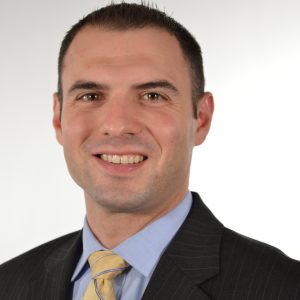
Brandon Fortier
“High performance facilities for computing are different than what most people would consider a data center,” says Brandon Fortier, IMEG’s Director of Science and Technology. “Data centers serve general purpose IT needs for a building or a company, things like web hosting, cloud storage capabilities, et cetera. High performance facilities for computing serve more of a scientific or other research need. They use significantly more computing power because they’re doing things like climate modeling or machine learning for AI.”
Such energy-intensive AI deep learning computing requires an intense amount of cooling, which generates a significant amount of waste heat. In the right locations—such as on a healthcare, higher education, or federal campus, as well as private research campuses—this heat can be recovered and pushed into district energy systems for use in the heating of neighboring buildings, greatly supporting overall sustainability and greenhouse gas reduction goals in the process.
“These high performance data centers definitely produce a lot of heat,” says Ken Urbanek, a client executive in IMEG’s Denver office. “On the other hand, that’s a great energy source. Let’s grab that source energy from that data center and push that into the campus.”

Ken Urbanek
Ken provides several real-life examples of leveraging such an energy source, from an East Coast university that is planning to condition millions of square feet across its campus to more niche examples such as conditioning greenhouses in colder climates and even warming a pond at a trout farm.
“There are a lot of synergies out there,” Ken says. For a campus, he adds, “as you’re looking to decarbonize and you’re looking at various options, part of that exercise should be if a data center makes sense… There’s not a research facility, whether it’s on a healthcare, academic, or other campus, that probably can’t find a business case to say, ‘How can we utilize advanced AI to help further our research?’ Now you just have to say, ‘Where on this campus can we find 10, 15, 20 megawatts of power?’ In your decarbonization plan, you might be pulling that energy anyway. And better to put it into AI and utilize it for research than to put it into heat pumps or some sort of electric generation system.”
For additional information, read this blog post.
 This episode of The Future Built Smarter explores the evolving landscape of healthcare design and engineering with guest Eric Vandenbroucke, Vice President of Healthcare at IMEG. “2025 started with a lot of optimism, but it’s definitely been a roller coaster,” he says.
This episode of The Future Built Smarter explores the evolving landscape of healthcare design and engineering with guest Eric Vandenbroucke, Vice President of Healthcare at IMEG. “2025 started with a lot of optimism, but it’s definitely been a roller coaster,” he says.
Despite uncertainty in the market amid potential federal reductions in Medicare reimbursements, Eric says many healthcare clients remain focused on sustainability initiatives. “Healthcare contributes about 5 percent of global emissions,” he says. “Owners are committed to reducing their carbon.” Resiliency and future proofing are also critical. From extreme weather to human threats, resilience demands a layered approach, including redundant power, onsite water storage, and cybersecurity. Vulnerability assessments set the stage for creating future-proof plans. “The biggest thing we can help clients with is understanding the state of their building or campus and what its vulnerabilities are,” Eric says. “Healthcare facilities need to be operational—period.”
Security is a top concern as well, especially in the wake of increasing threats like active shooter incidents. “We take a holistic approach,” says Eric, stressing that security requires much more than just cameras and guards. Key additional components of an all-encompassing security plan include employing the principles of Crime Prevention Through Environmental Design (CPTED) and personnel training, including tabletop exercises. “No one wants to deal with these events, but being prepared makes a huge difference,” Eric says.
Technology, of course, is the main driver of innovation for healthcare facility operations, clinical operations, and delivery of care—all of which need to communicate with each other and be interoperable. “We’ve moved beyond siloed systems to a smart system approach,” says Eric. “Alarms, patient monitoring, building automation systems, command centers, medical records, real-time location solutions, robotics—all of those things and more have to work together.”
As for artificial intelligence (AI), Eric says, “Where we are at right now in the industry is just the tip of the iceberg. Our clients are now using AI for clinical documentation, predictive analysis, optimizing their revenue cycle, using chatbots for scheduling, triage, and patient education. On the AEC side, AI is going to be a big tool for design assist. At IMEG we’ve developed our own AI system that helps us increase our design efficiency and accuracy. We’ve also developed many tools within Revit and Power BI to help with that efficiency and accuracy, and with coordination. And we continue to grow and expand the use of our virtual reality and augmented reality tools. It’s all very exciting.
“Technology and trends are going to continue to influence healthcare care moving forward. That’s one of the cool things about healthcare: It’s never the same. It’s always evolving.”
 This episode of The Future Built Smarter features Robbie Jones, an IMEG project executive and mechanical engineer who led the firm’s design of the new Advanced Engineering Building at the University of Nevada, Las Vegas—ENR’s 2024 Best of the Best Project in the higher education/research category.
This episode of The Future Built Smarter features Robbie Jones, an IMEG project executive and mechanical engineer who led the firm’s design of the new Advanced Engineering Building at the University of Nevada, Las Vegas—ENR’s 2024 Best of the Best Project in the higher education/research category.
The Advanced Engineering Building (AEB), located in the university’s “Innovation Corridor,” is designed to foster innovation and interdisciplinary collaboration within UNLV’s Howard R. Hughes College of Engineering. The AEB supports growing enrollment, education, and research in robotics, cybersecurity, biomedical engineering, energy and water, and artificial intelligence. The three-story, 52,000-sf building features wet and dry labs, classrooms, a maker space, an outdoor aviary for drone testing, and a flexible auditorium or “flexatorium” that can be used as a lecture hall or event space.
IMEG provided MEP and technology design for the facility, which also will aid start-ups in Nevada’s growing tech industry. To ensure the MEP design would meet the needs of the university, Robbie, a UNLV engineering graduate, met with several engineering department faculty members—some of whom had been his professors when he was a student.
“Never in a hundred years would I have thought that I would be designing an engineering building for UNLV,” says Robbie. “I was excited about doing it, and it was a cool thing for me … kind of a feather in my hat. I’ve done some billion-dollar gaming projects, and I think this is one of my favorite buildings.”
Read the IMEG case study to see photographs of the AEB and learn more about the engineering design. For a tour of the building, watch this UNLV video.
In this episode of The Future Built Smarter, Abby Coleman discusses IMEG’s use of immersive extended reality experiences, 1,300 of which were provided by the firm to project stakeholders in 2024. “Extended reality is an umbrella term for virtual reality and augmented reality,” says Abby. “I essentially use those technologies to help our clients and engineers visualize their design before anything is even built.”
 As IMEG’s Innovation Extended Reality Specialist, Abby also incorporates VR and AR technology into the firm’s engineering workflow to revolutionize the design process and bolster IMEG project team collaboration. “Whether reviewing a critical space or evaluating workflows, both the engineers and clients will be able to make confident and well-deformed decisions,” she says. Overall, she adds, immersive experiences help accelerate the decision-making process, reduce the number of costly revisions, and optimize project outcomes.
As IMEG’s Innovation Extended Reality Specialist, Abby also incorporates VR and AR technology into the firm’s engineering workflow to revolutionize the design process and bolster IMEG project team collaboration. “Whether reviewing a critical space or evaluating workflows, both the engineers and clients will be able to make confident and well-deformed decisions,” she says. Overall, she adds, immersive experiences help accelerate the decision-making process, reduce the number of costly revisions, and optimize project outcomes.
IMEG’s immersive experiences are utilized in many markets and for different purposes. Among the 1,300 experiences of the past year, Abby singles out an experience in which IMEG designers “sat” on a hospital bed within a 3D model of a patient room to determine the optimal size and number of footwall digital display screens, based on the patient point of view. In a similar vein, higher education project stakeholders “sat” in various locations of a conference room 3D model to determine the best locations and number of projector screens, again based on the end users’ perspective. And in an augmented reality experience, an engineer inside an existing mechanical room saw how a new chiller and its piping, as designed, would fit in the space.
Floor plans, the AEC industry’s traditional medium for communicating designs to clients, cannot truly represent a space. IMEG’s immersive experiences, however, are created using the firm’s robust 3D models, which provide spatial awareness and understanding. “When we’re able to put a client in a headset, some of the feedback is like, ‘Wow, now I understand this design. I know how it feels.’ “
In the future, Abby foresees every engineer having a VR headset on their desk and “essentially just using that on design from start to finish.” She also expects to see “VR more heavily incorporated with our client engagement,” with the annual number of stakeholder immersions exceeding last year’s 1,300 experiences. She bases her predictions on extended reality’s proven ability to bridge the communication gap between designers and clients.
As she says, “I believe that VR is a universal language of design.”
Watch IMEG extended reality experience videos of a patient room, conference room, and job site.
This episode of The Future Built Smarter—one in a series of conversations with IMEG’s market leaders—examines the industrial and manufacturing sector with Mike Walsh, Senior Director of Industrial. The teams under his leadership work on a broad range of projects from aerospace to wastewater treatment facilities. “The diversity of our work is what makes it exciting—every project has its own set of challenges and opportunities,” he says.
 Challenges currently facing industrial and manufacturing clients include speed to market (proper planning is critical to avoid delays that can cost companies millions); talent shortages (a lack of skilled professionals affects both operations and project execution); and technology integration (AI, automation, and robotics are becoming essential in addressing labor shortages and improving efficiency). “We’re seeing more companies invest in automation, not just to improve efficiency, but to fill the gaps left by labor shortages,” Mike says.
Challenges currently facing industrial and manufacturing clients include speed to market (proper planning is critical to avoid delays that can cost companies millions); talent shortages (a lack of skilled professionals affects both operations and project execution); and technology integration (AI, automation, and robotics are becoming essential in addressing labor shortages and improving efficiency). “We’re seeing more companies invest in automation, not just to improve efficiency, but to fill the gaps left by labor shortages,” Mike says.
Ensuring reliable access to power—a topic Mike examines in an IMEG blog post—also is critical for industrial and manufacturing owners. This is due to several factors affecting the power grid: increased demand due to population growth and electrification; increased power consumption by high-computing AI and data centers; aging infrastructure; severe weather impacts; and long lead times for major electrical equipment. “Securing enough power to support operations is one of the biggest challenges companies face today,” Mike says. “If you’re not thinking about power availability early in your planning process, you could be in for a long and costly wait.” To avoid such delays, he advises clients to evaluate power availability early in their project planning—ideally before purchasing land.
The challenges and opportunities in the rapidly developing industrial market make it imperative for owners to take a proactive approach, Mike says. This will enable them to stay ahead of the curve and build smarter, more sustainable operations. “The companies that succeed will be the ones that embrace change and invest in the right strategies today.”
This episode examines the Missouri Botanical Garden’s new Jack C. Taylor Visitor Center in St. Louis, winner of ENR’s National 2024 Best of the Best Project Award in the cultural category. The LEED Gold project houses an event center, gift shop, meeting spaces, restaurant, and auditorium, and included the renovation of the historic Linnean House, the oldest continuously operated public greenhouse west of the Mississippi. Insight into the project is provided by guests Zach Carter of IMEG and Deniz Piskin, Vice President for Facilities and Construction at the Missouri Botanical Garden.
 The decision to build the new center was largely driven by continual growth in the number of annual visitors; last year 1.3 million people visited the Garden, far more than the previous center could have comfortably accommodated. “The way the original visitor center was constructed, there were a lot of little bottlenecks in getting visitors through the center and into the garden,” Deniz says.
The decision to build the new center was largely driven by continual growth in the number of annual visitors; last year 1.3 million people visited the Garden, far more than the previous center could have comfortably accommodated. “The way the original visitor center was constructed, there were a lot of little bottlenecks in getting visitors through the center and into the garden,” Deniz says.
The overall visitor experience was the other focus of the project. In addition to the vastly improved entrance and its accessibility, upon entering the new center, visitors are immersed in natural light as they view the exterior gardens through the facility’s south wall of windows. An architectural lantern, or skylight, in the lobby includes a custom-designed scrim perforated in a pattern inspired by tree canopies. These and many other biophilic elements bring the outdoors in. “Everywhere you look, there’s something related to nature,” says Deniz.
Hidden from sight are the mechanical, electrical, plumbing, fire protection, and technology systems designed by IMEG. Key features include a 50,000-gallon rainwater collection cistern to provide water for the plants in the greenhouse (botanical garden staff consider rain “liquid gold”); displacement ventilation/natural stratification in the 50-foot tall lobby to improve occupant comfort; rooftop solar arrays; and a generator devoted to providing backup power to maintain the appropriate climate for the greenhouse, which features a variety of plants from the Mediterranean.
Collaboration among all stakeholders was integral to the design-assist project, which was completed in multiple phases and included the construction of a temporary visitor center to keep the Garden open to visitors throughout construction.
Deniz advises other organizations contemplating such a milestone project to “start with a clear understanding of what your goals and objectives are and check back throughout the design process to ensure you are not deviating from your goals. That’s what this team did. We always kept in mind our visitors, always kept in mind the visitor experience.”
See photos of the Missouri Botanical Garden’s Jack C. Taylor Visitor Center and read the IMEG project case study. For further information and photographs, read this feature published by Metropolis.
This episode of The Future Built Smarter examines the state of the hospitality market with IMEG’s Bob Winter—one in a series of conversations with the firm’s market sector leaders.
 Most recently serving as an IMEG client executive in southern California, Bob is now turning his full attention to the growth and continued development of IMEG’s portfolio in the hospitality sector—a market he has led for several years and in which he has vast experience. “I absolutely am excited,” he says of his re-established focus.
Most recently serving as an IMEG client executive in southern California, Bob is now turning his full attention to the growth and continued development of IMEG’s portfolio in the hospitality sector—a market he has led for several years and in which he has vast experience. “I absolutely am excited,” he says of his re-established focus.
“Our hospitality group includes MEP, structural, technology, and architectural lighting experts, and our teams are spread across the country, from New York and Philadelphia to Chicago, Denver, Las Vegas, and Southern California. “Hospitality is relationship-based,” he adds, with teams assembled for specific projects based on the type of project and expertise required, regardless of where a project is located. “Projects led by developers or architects in Chicago could be taking place in other markets throughout the country, maybe South Florida, for example. It always helps if we have an office where the project is, which we often do, but the design can be done by a remote team.”
Bob’s key goals include expanding IMEG’s work in luxury resorts, adaptive reuse, and major renovation projects. “The more complicated, the more challenging projects—those are the ones we want to acquire more of,” he says. Efficiency is another priority. “I want to work with the team so that we’re very efficient in our execution, taking advantage of hospitality’s repetitive design elements. Every property is unique, but guest room stacks are often similar, for example.”
While economic uncertainty has been “top of mind” in the industry for the past year and a half, he says 2025 has been identified as a year of “cautious optimism.” One area of growth is in branded residences, which help finance hospitality projects. “We have a number of these that we were successful in winning—like a Dream Hotel with condos, a Waldorf project with residences, and a Breckenridge Grand Vacation project,” he says. Another area of opportunity is in property improvement plans (PIPs), which require hotels to undergo updates every seven to 10 years. “Certainly, during COVID, PIP requirements got lax,” Bob says. “Some properties look tired as a result. But PIPs are no longer optional going forward.”
A key geographic area for growth is the Sun Belt—particularly Florida, Texas, Georgia, and South Carolina. “There’s quite a bit of work happening there,” he says. He also sees renewed investment interest in San Francisco and San Diego. “San Francisco is attracting private equity interest because properties can likely be obtained at a good deal, and recovery is noticeable.”
Despite the uncertainties in the market, Bob remains optimistic about the future of hospitality. “Hopefully by the end of Q1 or Q2, we’ll see a resurgence,” he says. “Consistent schedules, less delays, and more activity across the board—that’s what I’m hoping for.”
This episode of The Future Built Smarter features Steve Meyer, IMEG’s Transportation and Bridge Market Leader. “I try to get to know all of IMEG’s client executives and business developers to see where we can help fill the needs of our clients,” Steve says. This holistic approach, he adds, allows IMEG to provide comprehensive engineering design and services as needed for any project—from roadways to bridges to buildings—creating a seamless process for clients. “It makes it easy for the client that they can just hire one firm and fulfill quite a few services. Not only can we design their building, we also can design the road to their building.”
 IMEG’s transportation projects include traffic studies, bridge, roadway, and highway design, rehabilitation and inspection, non-motorized corridors, and grant applications that secure funding for infrastructure improvements. In the wake of the Infrastructure Investment and Jobs Act of 2021, Steve says there have been many infrastructure improvements made across the country but there’s much more work to be done. “Overall, my impression of roads and bridges today is that they’re improving,” he says. “We’re getting better as a nation, but we still have a long way to go.”
IMEG’s transportation projects include traffic studies, bridge, roadway, and highway design, rehabilitation and inspection, non-motorized corridors, and grant applications that secure funding for infrastructure improvements. In the wake of the Infrastructure Investment and Jobs Act of 2021, Steve says there have been many infrastructure improvements made across the country but there’s much more work to be done. “Overall, my impression of roads and bridges today is that they’re improving,” he says. “We’re getting better as a nation, but we still have a long way to go.”
Steve points to new techniques in the past several years that now can be used to extend the life of roads and bridges, helping clients get more for their money and delay more expensive replacement projects. Technological advances, too, have played a big role in how services are delivered. “The biggest change I’ve seen in transportation over the last 10 years has been the use of drone technology,” Steve says. “We can use drones to survey roads, inspect bridges, and even explore hard-to-reach areas. It saves time, improves safety, and gives us incredible precision.” Widespread use of 360-degree cameras also has allowed engineers to quickly and safely capture detailed views of infrastructure and sites. “We can even lower these cameras into manholes to inspect pipes and systems without putting anyone in harm’s way.”
Steve finds great satisfaction in helping provide the infrastructure that people need to improve their communities and way of life, one of the main reasons he became an engineer 25 years ago. On a recent project in South Dakota, for example, a roadway surrounded by a lake had a deteriorating bridge that the engineers replaced with a box culvert, a more economical, longer lasting, and adaptable solution. “The lake’s rising levels were inundating the road and damaging the bridge,” he says. “By replacing it with a box culvert designed to allow for future elevation changes, we ensured the road could remain open longer, even as water levels rise. This is critical for the community—it connects a rural school with the nearby town.”
Steve expects transportation projects to continue status quo over the next five to 10 years as the country continues to grapple with catching up on projects to repair, replace, and improve worn-out and outdated infrastructure. At the same time, he expects IMEG will play an ever larger role in such projects as the firm continues to grow and add new specialties. “We’ll continue to see a lot of transportation projects, but as more teams join IMEG, we’ll gain even more expertise and capacity to take on diverse challenges. Our goal in the transportation market remains the same: to help communities improve their roads and bridges.”
This episode of The Future Built Smarter examines the intersection of AEC technology and artificial intelligence (AI) with guest Alice Leung, Vice President at Brick and Mortar Ventures, an early-stage venture capital firm that focuses on construction technology. Alice explains that the firm invests in startups that address existing productivity challenges within the industry. “We’re here to invest in startups that are trying to solve real problems in the construction industry—not just crazy solutions looking for problems to solve.”
 Alice says the industry is seeing an influx of interest and investment in technology—noteworthy at a time when McKinsey & Company reports continue to highlight stagnation in construction productivity. “The industry is frustrated that the world thinks we are not more innovative, more technology forward, or productive,” she says.
Alice says the industry is seeing an influx of interest and investment in technology—noteworthy at a time when McKinsey & Company reports continue to highlight stagnation in construction productivity. “The industry is frustrated that the world thinks we are not more innovative, more technology forward, or productive,” she says.
AI is the chief driver of innovative construction technology, with current practical applications including streamlining manual tasks to make operations more efficient. This is transforming the estimating process, for example, with some AI software companies using AI to count components such as light fixtures or toilets from PDFs and models, significantly reducing the time and labor required for these tasks—and freeing up technical staff for more important design tasks. “Another low-hanging fruit area is in RFP’s—just being able to take past project proposals [and using AI] to help write new proposal material,” Alice says. “So, if you’re limited by the number of people that you have putting together proposals, if you’re able to leverage AI to speed up a lot of that work, in theory, you can go after more projects, you can win more work, build out a stronger pipeline.”
Alice adds that AI also is being used more and more to quickly create 3D environments to allow architects and engineers to present their designs to clients at an early stage, allowing them to visually understand the design and speed up decision-making. “Generative AI is really good at turning sketches into photorealistic stuff… There is just so much auto creation of virtual environments.”
Those in the AEC industry who are looking to innovate with AI technologies should not overlook the importance of governance, particularly regarding data privacy. “There’s a lot of conversation around data privacy… do we share our data with startups?” Alice says. When evaluating working with startups, she adds, “make sure that they have the technology architecture to be able but to swap in and swap out AI models,” which are getting better and exponentially faster—and often updated every six months or so. “The last thing you want is to have a big partnership with a startup that has hard coded their model or has built it in a way where they can’t swap it out easily.”
Learn more about Brick & Mortar Ventures at brickmortar.vc/.
 This episode of The Future Built Smarter features Matt Malcolm, leader of IMEG’s newest service, IMEG Labs. “With IMEG Labs we are able to offer our clients third-party unbiased evaluation of technology as part of the design process—ahead of actual construction events or implementation on a client’s site,” says Matt. The evaluations and demonstrations are conducted at the IMEG Labs testing site in the firm’s office in Naperville, IL. “We can take the different technologies that we’re describing as we talk about integration and smart buildings and bring them into our small-scale environment. We can leverage the agile framework and talk about how these things fit together, build out some proof of concepting, and make adjustments before we actually have people installing these things on site.” Owners and clients are encouraged to visit IMEG Labs for demonstrations of their anticipated technology solutions and integrations.
This episode of The Future Built Smarter features Matt Malcolm, leader of IMEG’s newest service, IMEG Labs. “With IMEG Labs we are able to offer our clients third-party unbiased evaluation of technology as part of the design process—ahead of actual construction events or implementation on a client’s site,” says Matt. The evaluations and demonstrations are conducted at the IMEG Labs testing site in the firm’s office in Naperville, IL. “We can take the different technologies that we’re describing as we talk about integration and smart buildings and bring them into our small-scale environment. We can leverage the agile framework and talk about how these things fit together, build out some proof of concepting, and make adjustments before we actually have people installing these things on site.” Owners and clients are encouraged to visit IMEG Labs for demonstrations of their anticipated technology solutions and integrations.
“It’s really about all the things that are behind the walls, the things that are above the ceilings, the things that are in the IDF closets—all the different functional boxes and smart pieces and parts that are connected to a network and drive how a business operates, whether it’s a hospital or a school or an airport. We connect them together with the appropriate wires to showcase everything it takes to achieve the business outcome or use case that a client is looking for.”
This service, Matt adds, “allows us to early in the process decide what brands or manufacturers work well together, which ones might be a barrier to implementing because there’s a huge implementation cost or integration development cost. It’s about timely evaluation of how these systems are going to work together so that they can influence the decisions.”
IMEG Labs also can set up mockups for training and continual improvement at a client’s site and can innovate solutions for which there may not yet be a product on the market that allows an owner to push the envelope.
“Clients are coming up with some great ideas and we’re taking those ideas and trying to see how they could come to life. We’re piloting a couple of different technologies—things that haven’t really been done before in certain environments.”
Listen to the podcast to learn more, read the IMEG Labs service overview, or contact Matt Malcolm.
 This episode of The Future Built Smarter features Dr. Sam Zolfagharian, president of the AI consulting firm YegaTech, which helps AEC companies adapt to the era of disruption caused by the introduction of artificial intelligence into the industry. A keynote speaker and author of the forthcoming book, “Disrupt It,” Sam also holds a Ph.D. in design computing and construction management and has over 20 years of experience developing technologies for the industry. Of six essential elements AEC companies should focus on when creating an AI strategy, she says the first step is establishing a culture of innovation. “If we can’t get the buy-in from our employees, if we don’t change their mindset, it doesn’t matter which tool we bring on board, it doesn’t matter how much investment we do—they’re not going to adopt it. “They might be scared of AI taking over their job, or they might just not be interested to try it because they’re missing the ‘why’ part. So, it’s really important to build that culture of innovation.”
This episode of The Future Built Smarter features Dr. Sam Zolfagharian, president of the AI consulting firm YegaTech, which helps AEC companies adapt to the era of disruption caused by the introduction of artificial intelligence into the industry. A keynote speaker and author of the forthcoming book, “Disrupt It,” Sam also holds a Ph.D. in design computing and construction management and has over 20 years of experience developing technologies for the industry. Of six essential elements AEC companies should focus on when creating an AI strategy, she says the first step is establishing a culture of innovation. “If we can’t get the buy-in from our employees, if we don’t change their mindset, it doesn’t matter which tool we bring on board, it doesn’t matter how much investment we do—they’re not going to adopt it. “They might be scared of AI taking over their job, or they might just not be interested to try it because they’re missing the ‘why’ part. So, it’s really important to build that culture of innovation.”
Even high-level executives sometimes need enlightenment as to the benefits of using AI to improve processes and outcomes. The day before Sam was to present an AR workshop for a company, a board member shared her skepticism about the usefulness of AI. After the session, however, the board member told Sam she now understood how AI could help their employees and augment their jobs.
T“At that moment I wondered how many other executives and board members may have the same mindset because they’ve been in the industry for a while and are skeptical about technology,” said Sam. “So, I’m hoping that with education we can change that mindset and build that culture of innovation for our industry.”
To learn more about YegaTech and the upcoming book, “Disrupt It,” visit https://yegatech.com/.
Decarbonization of energy-intensive laboratories takes center stage in this episode featuring guests from the International Institute for Sustainable Laboratories (I2SL).
“Laboratories are one of the highest consumers of energy because of the needs around safety,” says Gordon Sharp, I2SL president. “We’re talking about wet labs, which typically deal with hazardous materials or chemicals and require large amounts of ventilation. They also have other needs such as fume hoods and exposure control devices. Their unique design and operational requirements make them very different from other types of buildings.”
 The I2SL’s Labs2Zero initiative, launched in 2022, is designed to help the industry reduce energy consumption and take steps toward decarbonization. While the initiative emphasizes retrofitting existing labs, it also is expanding its focus to include new lab facilities as well.
The I2SL’s Labs2Zero initiative, launched in 2022, is designed to help the industry reduce energy consumption and take steps toward decarbonization. While the initiative emphasizes retrofitting existing labs, it also is expanding its focus to include new lab facilities as well.
“This is I2SL’s grand plan for decarbonizing lab facilities,” says Alison Farmer, Labs2Zero program director and I2SL board secretary. “Decarbonization is a real challenge in lab facilities, but it’s also a significant opportunity. These labs are consuming a lot more energy per square foot than most other types of facilities. And because they’re complex, because they’re typically unique, and because you have to consider safety and everything else, they often have gotten left out of some of the bigger programs dealing with building decarbonization.”
Labs2Zero resources include “score cards” in which owners can benchmark their building’s energy consumption and operational emissions compared to I2SL’s industry-wide database of energy use from more than 1,000 lab buildings. Other resources available now or in the future include embodied carbon benchmarking, Labs2Zero certification of the building energy scores, training for users of the program, and tools to help owners improve the performance of their buildings.
To help owners identify the next steps on their decarbonization journey, Labs2Zero will be launching its AIM reporting tool in the coming months. This will guide owners through evaluating appropriate measures for decarbonization for their building and ultimately create a plan and business case for improvements.
“With all of these components in place, we know that Labs2Zero is going to make a big difference in decarbonization of lab facilities,” says Farmer.
Decarbonization, energy efficiency, and sustainability in laboratories and other high-tech facilities will be examined during the I2SL’s 2024 Annual Conference, “The Gateway to Efficient Labs,” Sept. 29 to Oct. 2 in St. Louis. The conference draws architects, engineers, lab owners, and sustainability professionals from around the world.
Learn more about the I2SL, Labs2Zero, and the I2SL Annual Conference.
 IMEG’s Peter Monroe joins this episode of The Future Built Smarter to share the experiences of his recent site visit to Antarctica. A former client executive and a structural engineer for 55 years, Peter made the journey from Denver to Antarctica in early 2024 to visit a project at McMurdo Station, a National Science Foundation research facility on Ross Island. McMurdo is undergoing extensive updates, and Peter’s visit was to observe the structural construction of the station’s new dormitory, one of two buildings for which IMEG has provided structural construction documents.
IMEG’s Peter Monroe joins this episode of The Future Built Smarter to share the experiences of his recent site visit to Antarctica. A former client executive and a structural engineer for 55 years, Peter made the journey from Denver to Antarctica in early 2024 to visit a project at McMurdo Station, a National Science Foundation research facility on Ross Island. McMurdo is undergoing extensive updates, and Peter’s visit was to observe the structural construction of the station’s new dormitory, one of two buildings for which IMEG has provided structural construction documents.
Established in 1955, McMurdo consists of numerous buildings and infrastructure of varying sizes and functions, many that are no longer used, others that will be replaced and consolidated into more efficient modern facilities. “I’ve been telling people the best way to describe it is like some of the old mining towns here in Colorado or out in California that are half abandoned,” Peter says of his first impressions of McMurdo. He also discusses the added challenges of design and construction in the Antarctic—extreme weather and permafrost, materials logistics, limited construction seasons—and key takeaways from the dormitory project. “Generally, we made good decisions,” he says, adding that there were many lessons learned to apply to the core building—the next project IMEG will design for the NSF. “The dormitory is one of their first major projects and hopefully the lessons transfer.”
While he was scheduled to be at McMurdo for six days, bad weather and airplane mechanical issues extended his stay to 12 days. That allowed him to be present for the dormitory “topping off” ceremony—the hoisting and placement of the final structural steel beam, which he signed along with the other project team partners who were present. The additional days also gave him extra time to explore and take photos and videos of the Antarctic’s native residents. “One of the days, there were two little Adelie penguins walking down the road and we were all standing there watching them. Another day the big emperor penguins came in and there was probably 50, 60, or 70 of them.”
The Antarctica trip will always stand out among Peter’s career highlights and is decidedly his farthest site visit ever—eclipsing a past visit to Saudi Arabia and easily outdistancing anything else. “For something that was in Denver, I’d leave the office in the morning, go out, and be back before lunch.”
Watch a video of Peter Monroe’s Antarctica site visit.

Adam McMillen
In the first in a series of episodes on IMEG’s refreshed Sustainability Plan, Adam McMillen, director of sustainability, and Taylor Gawthorp-Cruse, senior sustainability and energy consultant, discuss key aspects of the initiative. Designed to integrate environmentally friendly practices at the firm’s offices, the updated plan builds upon the original version, released in 2018, and promotes conserving energy and water, lowering carbon emissions, and reducing waste. The 2024 version includes new mandated initiatives (such as tracking office energy usage) as well as optional initiatives (such as providing in-office composting) that allow each location to take actions best-suited for their office, whether corporate owned or rented.
While the firm’s largest positive impact on the environment rests within its ability to reduce the carbon footprint of its clients’ projects, it also can now make a sizeable impact through the operations and actions at its own offices, which now number 90-plus across the U.S. “Now our carbon number has become a big number, and if we have a sustainable mindset where we work every day, then that scales, too,” says McMillen. “If you only have three offices, it is still worth it to think about it, but it has become more important for us now for sure.”

Taylor Gawthorp-Cruse
Implementing an internal sustainability plan is a large undertaking, and organizations seeking to do so should start by identifying office champions who can lead the effort at each office location.
“My biggest piece of advice is to harness the power of passionate people in your firm,” says Gawthorp-Cruse. “You’d be surprised by the drive of people who want to make a positive impact and bring new ideas to the table that maybe they don’t get to express in their day-to-day work. Our sustainable office champions are amazing, and I think there’s nothing a group of passionate people can’t accomplish.”

Jessica Lee
The second in a series of episodes on IMEG’s refreshed Sustainability Plan features Jessica Lee, a sustainability and energy consultant with the firm. Also the Sustainability Plan champion in IMEG’s Chicago office, Jessica collaborates with her co-workers to implement the plan’s mandated and optional initiatives.
Jessica’s passion for the environment began as a child growing up within an indigenous community in Hawaii. “Being surrounded by the greenest greens and the bluest blues in the world made me appreciate nature and respect nature,” she says. “So, growing up I was just surrounded by the idea that the earth is what gives us life and we should work with it rather than against it.”
In addition to contributing to the company-wide tracking of office energy use and other mandated initiatives, Jessica is looking forward to helping the Chicago office choose and implement its optional sustainability initiatives. She hopes these will include an office composting bin and increased use of public transportation to and from work.
“Everybody’s coming together to get new ideas on what they could do in the office and it’s just really inspiring to see that,” she says.

Anchila Monks
IMEG’s Anchila Monks is featured in the third episode in a series about the firm’s refreshed Sustainability Plan. A business developer with IMEG, Anchila is also the Sustainability Plan’s champion in the firm’s office in Portland, OR, where she collaborates with her co-workers to implement the plan’s mandated and optional initiatives.
Anchila recalls what her grandmother told her at a young age: “She said that heaven and earth and humanity are different manifestations of one life energy, and that we only have one planet—and there is no Planet B.” For Anchila, this was the beginning of her understanding of the importance of taking care of the environment.
Living and working in Portland—one of the country’s greenest communities—makes some of the Sustainability Plan’s optional initiatives easier to accomplish, such as biking and carpooling to work, recycling, and composting. The office also has “adopted a block” and formed a “Team Portland” group to participate in a community clean-up day.
Like other IMEG Sustainability Champions, Anchila is passionate about her role, and urges people everywhere to not procrastinate in helping to save the environment.
“Do not waste time,” she says. “This is the right time to do it.”

Steve Germano
In this two-part episode, IMEG software development team lead Steve Germano joins Mike Lawless and Joe Payne for a conversation about IMEG’s internal, AI-powered chatbot, Meg. After a year-and-a-half of development, Meg is now live and serves as a search engine for the firm’s engineering teams and other departments, drawing from the company’s vast amount of stored data.
Built as a large language model, or LLM, questions can be asked of Meg by anyone in the company on a variety of engineering and non-engineering topics, from “How do I submit my expense report” to “Where can I find guidance on sizing steam traps?” Meg will then point the user to the appropriate in-house tool or information from among the firm’s own curated, accurate, and verified databases. Meg fields upwards of 1,000 questions a day from the firm’s 80-plus engineering teams and other staff around the country, quickly bringing knowledge from across the firm to answer questions and provide technical information to provide the best solutions for local clients.
“We built a singular entry point to help users find information they’re looking for across the company in a single place,” says Germano, who also is a mechanical engineer. “Everyone can just type a sentence and ask what they want, just like you’d be asking a colleague sitting next to you.”
Far from replacing engineers, Meg acts as an assistant to help them more quickly find the data and answers to their questions—an especially useful “co-pilot” and source of accelerated learning for less experienced engineers (who also continue to be mentored by the firm’s veterans).
“It’s like having someone you can bug and ask 50 questions a day and know you’re not going to aggravate them and eat up their time,” says Germano, who expects to see similar AI-powered assistants being developed across the AEC industry. “As the technology continues to develop, it’s just going to get better and better, and more and more knowledge will be available.”
Germano offers a bit of advice for firms thinking about embarking on such a journey. “There are a lot of tools out there to start exploring with, but in parallel with that, you need to determine if your data is even ready to be consumed by AI. That’s a deep topic that needs to be explored as it can take a lot of time to curate and cleanse your data.”

Kat Klingenberg
Kat Klingenberg, executive director and co-founder of the non-profit organization Phius, talks about the history and current state of passive building in this episode of The Future Built Smarter. “Passive building principles are not rocket science,” she says. “We’re talking about continuous insulation, airtight construction, no thermal bridging in the envelope, good fenestration components, and minimized mechanical systems. It’s all about holistic integrated design, and once that is all implemented correctly, we get the result of super-low energy buildings that are pretty much zero-energy ready.”
Kat also directs the technical and research programs at Phius, which certifies passive buildings and high-performance building products. The organization also has trained more than 5,000 architects, engineers, energy consultants, and builders as Phius Certified Consultants, Builders, and Raters/Verifiers.
Predated by the construction of thousands of passive houses in North America during the 1960s through 1980s and originally modeled off the Passive House Institute of Germany, Phius codified the passive house strategies in the U.S. when the organization was founded in 2003. The principles have evolved over the past two decades and today apply not only to homes but also to new construction and retrofits of all building types, with climate-specific standards for different geographic regions.
Passive building principles are a vital tool in the global decarbonization effort underway in the built environment—so much so that the 2024 USGBC International Greenbuild Conference will include a Phius-exclusive track, pre-conference summit, and pavilion of exhibitors.
“There has been collaboration and friendship between the Green Building Council and Phius for quite a while, and we decided that Phius should have a track within Greenbuild this year,” says Kat. “We call it ‘Phius at Greenbuild.’ We hope that we can create a lot of interest in what we do and bring the stakeholders of Greenbuild into the fold and help them with their next challenges.”
The urgent need to decarbonize at light speed, advances in heat pump and envelope technologies, the mastering of air tightness strategies by a growing number of builders, and the expectation that jurisdictions will begin to include Passive Building Certification as part of net-zero stretch codes (Massachusetts has already done so) are all bringing Phius into the spotlight as never before. “It’s almost like the perfect storm,” says Kat. “It’s super exciting.”
Visit Phius on the web to learn more about the organization and its collaboration with the 2024 USGBC International Greenbuild Conference.
Read about one of IMEG’s Phius-certified projects, the net-zero Prairie Trails School in Mount Prospect, IL.

Craig Chamberlain
This episode of The Future Built Smarter podcast provides a high-level look at seismic design and preparedness 30 years after the Northridge earthquake rocked Southern California in 1994. Joining the discussion is IMEG structural engineer and client executive Craig Chamberlain, president of the Structural Engineers Association of Southern California, which hosted the Northridge30 Symposium on the anniversary of the event in January. “The symposium brought policymakers, city government officials, building officials, and engineers together to help make sure we’re still moving ahead even 30 years after the earthquake, and that we don’t forget what happened on that devastating day,” he says.
The magnitude 6.7 earthquake shook the San Fernando Valley region of Los Angeles at 4:30 a.m. Jan. 17, 1994, resulting in at least 57 deaths and more than 8,700 injuries. It was California’s most destructive seismic event since the San Francisco earthquake of 1906 and the state’s costliest to date, by some estimates causing up to $50 billion in damage to buildings and infrastructure. It also ushered in new and advanced building codes and requirements, building retrofits, and new structural best practices for building types with specific vulnerabilities—all of which continue to evolve. “A lot has come to pass since that day, but there is more work to be done,” says Chamberlain.
The lessons learned from Northridge, the advances in design and technology, and the growing use of structural assessments, building resiliency strategies, and recovery measures have applications outside of seismic areas, since a variety of natural events can threaten buildings and infrastructure throughout the U.S. “It’s important that we’re prepared for that event when it comes, because it’s going to come, whether it’s a hurricane, tornado, flood, or earthquake,” says Chamberlain.
 IMEG President and CEO Paul VanDuyne talks about the trajectory of his career and the firm’s growth during his 20-year tenure as CEO in this special episode of The Future Built Smarter. The recipient of ENR Midwest’s 2023 Legacy Award, Paul entered the industry as a design electrical engineer 47 years ago when he joined IMEG—then KJWW Engineering. In 2003 he became president and CEO, and since 2015 IMEG has completed 35 acquisitions and has gone from 800 staff members to over 2,400 staff at 80 locations coast to coast. All of that might not have happened, however, had Paul followed his original plans when he moved from the East Coast—where he’d already earned an engineering degree—to Davenport, Iowa.
IMEG President and CEO Paul VanDuyne talks about the trajectory of his career and the firm’s growth during his 20-year tenure as CEO in this special episode of The Future Built Smarter. The recipient of ENR Midwest’s 2023 Legacy Award, Paul entered the industry as a design electrical engineer 47 years ago when he joined IMEG—then KJWW Engineering. In 2003 he became president and CEO, and since 2015 IMEG has completed 35 acquisitions and has gone from 800 staff members to over 2,400 staff at 80 locations coast to coast. All of that might not have happened, however, had Paul followed his original plans when he moved from the East Coast—where he’d already earned an engineering degree—to Davenport, Iowa.
“I actually came out to the Midwest to become a chiropractor,” he says. “I was going into a new career direction. About six months into it I needed to make some money and joined this small engineering company over in Rock Island, Illinois. I was their 16th person at the beginning of 1976. That’s my story with what eventually became IMEG.” Paul shares how his interest in healthcare—he did go on to earn his Doctor of Chiropractic degree from Palmer College—led to jumpstarting and building IMEG’s healthcare portfolio, which today is ranked 4th in the nation among engineering firms by Building Design+Construction.
Paul also discusses IMEG’s ongoing strategic mergers and acquisitions, its goal to become a billion-dollar company, and how its wide diversity of markets and services, geographic distribution, employee ownership, and single profit center combine to provide the firm with resilience and growth even during times of adversity. “All that really helped us get through the pandemic, but also any difficult times that come up,” he says. “That’s a huge stability factor for us.”
After nearly 50 years in the business, Paul says he is very committed to a daily health regimen that helps him to stay energized and meet the demands of the job, physically and mentally. “I think a lot of it has to do with mindset,” he says. “If your mindset is a progressive mindset, and it’s an abundance mindset, I think that gives you a huge advantage.”
Learn more about IMEG’s approach and stories of success in the new mini-documentary, “IMEG Built Smarter: A Strategic Growth Story.”
This episode features Missy Stults, Sustainability and Innovations Director for the City of Ann Arbor, MI, one of 11 communities being funded by the U.S. Department of Energy’s Geothermal Technologies Office to design a community geothermal heating and cooling system. Joining the conversation is IMEG Sustainability Director Adam McMillen, who is leading the analysis and design portion of the project.
 “In Ann Arbor we have the goal of achieving a just transition to communitywide carbon neutrality by 2030,” said Stults. “One of the things that is really critical is centering equity in our work, and so from the very beginning we said we have to make sure that we’re working with neighborhoods that we’ve traditionally disinvested in.” The city’s Bryant Neighborhood—an underserved, energy-burdened community of 262 households, 75 percent of which are considered low-income, with over 50 percent of residents being minorities and renters—was chosen for the project. “For almost three years we’ve been working with Community Action Network (CAN) and the residents of Bryant to figure out what would it mean if they became the most sustainable neighborhood in America,” said Stults. “What would it mean if you flipped the script on a neighborhood that we sort of just forgot about and made it be the centerpiece of climate action? And then this project came about.”
“In Ann Arbor we have the goal of achieving a just transition to communitywide carbon neutrality by 2030,” said Stults. “One of the things that is really critical is centering equity in our work, and so from the very beginning we said we have to make sure that we’re working with neighborhoods that we’ve traditionally disinvested in.” The city’s Bryant Neighborhood—an underserved, energy-burdened community of 262 households, 75 percent of which are considered low-income, with over 50 percent of residents being minorities and renters—was chosen for the project. “For almost three years we’ve been working with Community Action Network (CAN) and the residents of Bryant to figure out what would it mean if they became the most sustainable neighborhood in America,” said Stults. “What would it mean if you flipped the script on a neighborhood that we sort of just forgot about and made it be the centerpiece of climate action? And then this project came about.”
The goal of the project is to design (and eventually build) a community-scale geothermal system that covers at least 75% of the heating and cooling load for all 262 households as well as for a local school, a county community mental health service center, and the City of Ann Arbor’s public works facility. The project will directly lower the neighborhood’s greenhouse gas emissions by 40%, significantly improve indoor air quality, eliminate the energy burden for low-income residents, and enhance year-round comfort.
The project team is led by the City of Ann Arbor and consists of 14 entities including CAN and other community organizations, mental health providers, the public school district, utility providers, geothermal design firms, and workforce development and training organizations.
“The answer to the climate crisis isn’t brand new neighborhoods everywhere,” said McMillen. “It is: Work with what we have in a smarter way, reuse resources we have, then lift everyone else up with us. And make it replicable so anyone can do it.”
Read more about the project.
This episode offers a preview of UW Health’s Eastpark Medical Center in Madison, WI. Expected to be fully open by Fall 2024, the seven-story outpatient facility will offer advanced imaging and lab services, destination services, multidisciplinary adult specialties, and women’s complex care. The center also will feature the state-of-the-art UW Health | Carbone Cancer Center, one of the few in the country to offer proton therapy and, in collaboration with Leo Cancer Care, the first healthcare facility in the U.S. to offer upright proton therapy.
 Discussing the new center and proton therapy aspects of the project are Jerry McGuire and Steve Mumm, senior project managers for University of Wisconsin Hospitals and Clinics Planning Design and Construction, and Kevin Langan, an IMEG mechanical engineer working on the project. “Proton therapy is a relatively new cancer treatment,” says McGuire. “It’s an advanced form of radiation therapy using a precise dose of radiation that conforms to the tumor itself—reducing side effects and causing no damage to surrounding healthy tissues.” The new center will offer both a rotating gantry where a patient lies down on a couch with the machine rotating around them, and an upright fixed beam system in which the patient sits up. The upright system is being found to provide improved outcomes— offering greater comfort, reducing patient anxiety, and improved accuracy—and is particularly beneficial for pediatric patients.
Discussing the new center and proton therapy aspects of the project are Jerry McGuire and Steve Mumm, senior project managers for University of Wisconsin Hospitals and Clinics Planning Design and Construction, and Kevin Langan, an IMEG mechanical engineer working on the project. “Proton therapy is a relatively new cancer treatment,” says McGuire. “It’s an advanced form of radiation therapy using a precise dose of radiation that conforms to the tumor itself—reducing side effects and causing no damage to surrounding healthy tissues.” The new center will offer both a rotating gantry where a patient lies down on a couch with the machine rotating around them, and an upright fixed beam system in which the patient sits up. The upright system is being found to provide improved outcomes— offering greater comfort, reducing patient anxiety, and improved accuracy—and is particularly beneficial for pediatric patients.
The planning, design, and construction not only of the proton therapy spaces but also the infrastructure to support the technology was like no other healthcare project. “There were huge implications well beyond the proton therapy space—for example, the chiller plant gets larger, an additional electrical service was added, and larger generators,” said Langan. “It also required a lot of coordination with the proton therapy vendors to make sure we were providing what they needed.” To withstand the neutron dose rates of the treatment bay and contain the radiation, the proton therapy space also required 7-foot-thick concrete walls below grade. A temporary system to pump glycol through tubing within the poured concrete was required to keep the concrete from overheating and to cure appropriately.
Eastpark Medical Center is also seeking LEED v4.1 certification for healthcare and has several sustainable features, including a 1MW rooftop solar array which provides the approximate energy needed to power the proton center. “We basically will have a carbon-neutral proton center in Madison, Wisconsin,” says Mumm.
 Scott Campagna, Senior Director of Housing at IMEG, is featured in this episode—one in a series of conversations with the firm’s market leaders. Scott talks about the subsectors of IMEG’s housing work—neighborhoods, multifamily, student housing, and senior living—and the challenges and opportunities facing the market overall. “It’s an interesting time,” he says. “There’s a huge housing demand in all sectors but in the current environment, with the lending being pulled back, projects in all sectors generally are moving a bit slower.” Scott also discusses office-to-residential conversions, a trending topic in the market. He cautions that such pursuits always be preceded by an infrastructure assessment. “Certainly not every building is the same nor is it best suited necessarily for a housing conversion. You need to look at the systems infrastructure to ensure it will support the housing project. You don’t want to be hit with any surprises after the fact or during construction.” On all projects in the market, Scott says the mentality at IMEG is to “Turn housing into homes. We understand we are drawing more than just lines on paper—we are providing a home where people can thrive and flourish within our communities.”
Scott Campagna, Senior Director of Housing at IMEG, is featured in this episode—one in a series of conversations with the firm’s market leaders. Scott talks about the subsectors of IMEG’s housing work—neighborhoods, multifamily, student housing, and senior living—and the challenges and opportunities facing the market overall. “It’s an interesting time,” he says. “There’s a huge housing demand in all sectors but in the current environment, with the lending being pulled back, projects in all sectors generally are moving a bit slower.” Scott also discusses office-to-residential conversions, a trending topic in the market. He cautions that such pursuits always be preceded by an infrastructure assessment. “Certainly not every building is the same nor is it best suited necessarily for a housing conversion. You need to look at the systems infrastructure to ensure it will support the housing project. You don’t want to be hit with any surprises after the fact or during construction.” On all projects in the market, Scott says the mentality at IMEG is to “Turn housing into homes. We understand we are drawing more than just lines on paper—we are providing a home where people can thrive and flourish within our communities.”
 In a continuing series of discussions with IMEG’s market leaders, this episode of The Future Built Smarter features John Holbert, vice president of education. John discusses the challenges facing the market, primarily those for higher education institutions, which face ever-increasing enrollment competition, changes in student demographics, limited resources, aging infrastructure, and difficulties with facility staff retention. Many higher education institutions, as well as K-12 school districts, also face challenges in meeting sustainability and environmental initiatives as well as the need to improve safety and security in their buildings and on their campuses. “Security has become a big topic, and we have started consulting on safety and security plans for campuses and districts,” he says. Such initiatives start with a vulnerability assessment and gap analysis, with planning and design including principles from Crime Prevention through Environmental Design, or CPTED. “We’re also seeing more referendums and funding opportunities for safety and security measures,” he adds. Before embarking on any building project, John emphasizes the importance of master planning to best prepare for the needs of the future. Such planning helps institutions meet their long-term goals and allocate funds and other resources accordingly—before it’s too late. “Across the landscape of education, we see a lot of deferred maintenance,” he says. “We’re still going into 50-plus-year-old buildings that have original systems in them.”
In a continuing series of discussions with IMEG’s market leaders, this episode of The Future Built Smarter features John Holbert, vice president of education. John discusses the challenges facing the market, primarily those for higher education institutions, which face ever-increasing enrollment competition, changes in student demographics, limited resources, aging infrastructure, and difficulties with facility staff retention. Many higher education institutions, as well as K-12 school districts, also face challenges in meeting sustainability and environmental initiatives as well as the need to improve safety and security in their buildings and on their campuses. “Security has become a big topic, and we have started consulting on safety and security plans for campuses and districts,” he says. Such initiatives start with a vulnerability assessment and gap analysis, with planning and design including principles from Crime Prevention through Environmental Design, or CPTED. “We’re also seeing more referendums and funding opportunities for safety and security measures,” he adds. Before embarking on any building project, John emphasizes the importance of master planning to best prepare for the needs of the future. Such planning helps institutions meet their long-term goals and allocate funds and other resources accordingly—before it’s too late. “Across the landscape of education, we see a lot of deferred maintenance,” he says. “We’re still going into 50-plus-year-old buildings that have original systems in them.”
 Holistic security considerations for K-12 school design are examined in this 17-minute episode featuring Ryan Searles, IMEG’s security consulting group leader. Ryan spends an average of three weeks of each month traveling the country presenting at conferences or training organizations in crisis management, active shooter mitigation, and other security preparedness—with a growing number of school districts seeking his team’s services. “We keep seeing a rise in violence in the United States and more violent events occurring at places of education,” he says. “In K-12, particularly, it’s really about what we can do to mitigate it from happening.” In addition to getting involved earlier in the design phase of new facilities, Ryan and his team are also conducting an increasing number of security assessments of existing schools, providing answers to such questions as, “What do we have in place? What are we doing right? Where are our gaps and where are our vulnerabilities? How do we fix those?” The most effective security design and emergency preparedness takes a blended, holistic approach, Ryan says, and includes not only physical and technology design aspects but also “the human aspect”—training, drills and rehearsals for staff and students, as well as proactive threat assessments of individuals and being vigilant about watching for early warning signs. “We’ve been a very reactive culture in the United States with school security and safety. We can’t do that anymore—that’s become very apparent and has a lot to do with my team being so busy. Schools are reaching out saying, ‘Come show us what we need to do to keep these kids safe.’ “
Holistic security considerations for K-12 school design are examined in this 17-minute episode featuring Ryan Searles, IMEG’s security consulting group leader. Ryan spends an average of three weeks of each month traveling the country presenting at conferences or training organizations in crisis management, active shooter mitigation, and other security preparedness—with a growing number of school districts seeking his team’s services. “We keep seeing a rise in violence in the United States and more violent events occurring at places of education,” he says. “In K-12, particularly, it’s really about what we can do to mitigate it from happening.” In addition to getting involved earlier in the design phase of new facilities, Ryan and his team are also conducting an increasing number of security assessments of existing schools, providing answers to such questions as, “What do we have in place? What are we doing right? Where are our gaps and where are our vulnerabilities? How do we fix those?” The most effective security design and emergency preparedness takes a blended, holistic approach, Ryan says, and includes not only physical and technology design aspects but also “the human aspect”—training, drills and rehearsals for staff and students, as well as proactive threat assessments of individuals and being vigilant about watching for early warning signs. “We’ve been a very reactive culture in the United States with school security and safety. We can’t do that anymore—that’s become very apparent and has a lot to do with my team being so busy. Schools are reaching out saying, ‘Come show us what we need to do to keep these kids safe.’ “
Ryan Searles will present “Security Considerations for School Design” at 8:15 a.m. Oct. 13 at the Association for Learning Environments’ National Conference, LearningSCAPES 2023, in Chicago. Learn more.
 This episode features Jack Kusek, an IMEG civil engineer with expertise in water and wastewater projects. Listen to the episode and you’ll learn:
This episode features Jack Kusek, an IMEG civil engineer with expertise in water and wastewater projects. Listen to the episode and you’ll learn:
- What PFAs are and what can be done about them
- Which U.S. city has the largest concentration of lead pipes
- Why security is a big concern for water and wastewater facilities, particularly in smaller communities
- How two communities collaborated to ensure their water resiliency
- Why outsourcing facility operations is a necessity for many small municipalities/small>
- How IMEG has helped restore Frenchman’s Reef resort on St. Thomas in the U.S. Virgin Islands following back-to-back hurricanes that devastated the property in 2017
Jack also discusses his motivation for the work he specializes in, and the reward he receives when he’s able to help a community improve its water infrastructure and water quality and provide for one of the fundamental needs of life.
“The fact that we can help people on St. Thomas and other communities so that they have new facilities, cleaner water to drink, and wastewater plants that aren’t polluting the streams—just seeing how those improvements benefit people and how thankful they are, that’s motivation enough for me.”
 In the second of a series of conversations with IMEG market leaders and directors, Brandon Fortier, Director of Science & Technology, joins podcast host Joe Payne and series co-host Steve Rhoades, Vice President of Market Development and Federal Solutions. This episode, like the others in the series, provides a high-level view of the trends, challenges, opportunities, and topics that are top-of-mind for IMEG’s clients and partners.
In the second of a series of conversations with IMEG market leaders and directors, Brandon Fortier, Director of Science & Technology, joins podcast host Joe Payne and series co-host Steve Rhoades, Vice President of Market Development and Federal Solutions. This episode, like the others in the series, provides a high-level view of the trends, challenges, opportunities, and topics that are top-of-mind for IMEG’s clients and partners.
“Science and technology intersects many different vertical markets and a lot of our clients’ questions and needs are very specific to their program,” says Brandon. “But the continuity between them is environmental related—sustainability, resiliency, climate change, decarbonization—things that we hear about in a variety of markets are the same ones that science and technology clients are very focused on.” At the same time, adds Brandon, “we’re seeing a lot of different opportunities with specialization in the market,” including cell gene therapies, life sciences, and healthcare in general. “These have provided many opportunities for new research, and we’re seeing many owners expanding the market.”
Communication is vital for engineers to provide successful solutions to S&T clients’ needs. This includes not only communicating with facility staff but also the end users—the researchers and industrial hygienists and safety and chemical experts. “We need to address the needs of all end users in the facility design,” says Brandon. “We don’t necessarily need to understand the research they’re doing, but we need to understand what they need out of the building systems.”
Many in the healthcare industry have come to recognize the significant and symbolic role that healthcare organizations, their designers, and builders, can play in reducing the carbon emissions, or greenhouse gases, introduced by the built environment of their facilities. In this podcast episode, IMEG Vice President of Healthcare Eric Vandenbroucke and Director of Sustainability Adam McMillen discuss why decarbonization is needed in healthcare, the challenges and opportunities that will be encountered along the way, and how organizations can start down the path. For additional information, listeners can read the free IMEG executive guide, “Decarbonization in Healthcare: A Practical Approach for the Built environment.”

Brendon Buckley
The amount of data available from multiple building systems continues to grow exponentially. What this data is and how to decide what to do with it is examined in this two-part episode of The Future Built Smarter. Our guest on these episodes is Brendon Buckley, IMEG Protect Executive for Building Intelligence and Integration. In Part 1, Brendon discusses building system data and the potential it presents to owners for not only improving their building’s operational performance but their business outcomes as well. “Even though it’s an amazing thing to be able to maintain a comfortable, safe, sustainable environment, there’s a lot more we should be expecting out of our buildings,” he says. “What processes or areas could be improved with a little additional help from the systems within the building? What outcome or what result could that drive? I think each individual owner needs to brainstorm about what kinds of benefits they are not getting that they probably should be getting.”
In Part 2, Brendon talks about the use of a “digital twin” to model changes in operations using building system data before any actual changes are made. “A digital twin in the simplest term is a virtual representation, using collected data, of the systems that are running in a building,” he says. Still largely just beginning to emerge on the scene, a digital twin can be used to determine not only how a building will react under different scenarios but also how the scenarios will affect occupants, staff, and processes. While useful for many different building types and markets, a digital twin can be particularly beneficial for mission critical buildings and those that must operate 24/7, such as manufacturing and healthcare facilities. “Being able to model critical environments that have so many systems in play is really tremendous,” Brendon says. “Understanding the data and being able to leverage a digital twin in actual building utilization is really a big deal, and I think we’re going to see the use of this expand.”

Thom Kurmel
The concept of team commissioning, the benefits it can bring to any large project with multiple stakeholders, and its application in the federal sector are examined in this two-part episode of The Future Built Smarter. Our guests are Thom Kurmel, President of TDK Consulting—a VA Certified Service-Disabled Veteran Owned Small Business specializing in health systems design, organizational performance, business and operational planning, and infrastructure strategies—and Armand Harpin, IMEG Director of Federal Healthcare.
Similar in some respects to building commissioning—in which a third-party consultant verifies that a building is operating to its fullest potential as designed—team commissioning involves ensuring that multiple project stakeholders work together in the most efficient manner “to really use the power of the team to get the job done,” says Kurmel. As a partnering consultant, he applies “tried and true methods” to commission a team, including accountability, proper alignment, governance, management expectations, risk management, and identification of roles and responsibilities. “You want to understand all of this at the beginning, and team commissioning allows that conversation to happen so people understand that they’re part of the solution,” he says.

Armand Harpin
With the structure and expectations in place, it is imperative to maintain constant communication among the team and to have access to a representative from each stakeholder—including the owner—who can say “yes” or “no” as issues arise. “This shortens the amount of time for decision making, which is essential in a construction project,” Kurmel says. “If you can’t answer those questions quickly, especially during an active acquisition, you’re going to delay the project and it’s going to cost more money. That vexes a lot of teams because they haven’t set themselves up for success by providing the forum for discussion, discernment, decision, and then action.”
Kurmel holds a Doctorate in Design from Harvard University, a BS in Architecture from the University of Nebraska, is a registered architect, certified design-build professional, and a Fellow in the Health Facility Institute. He also is currently a member of the DBIA Federal Committee and on the National Board of Directors for DBIA. He founded TDK Consultants after serving 30 years on active duty with the U.S. Army, where he was a platoon leader for the Combat Heavy Construction engineer battalion; served as commander, director, and chief of project management with the U.S. Army Health Facility Planning Agency; and was Senior Military Advisor and Chief of Staff, Office of the Assistant Secretary of Defense for Health Affairs.
“Every single day we worked to provide facilities for active-duty soldiers and their families worldwide. So, I got a big dose of how to do this kind of work at a very large scale. I opened a consulting practice to try to continue to support facilities and missions, both in the federal space and the commercial world.”
 What is a microgrid? What are its benefits? Does it offer a good return on investment? Answers to these questions and more are discussed in this episode featuring Mike Zorich, IMEG Chief Operations Officer, and Eric Vandenbroucke, IMEG Vice President of Healthcare. “A microgrid is a collection of power sources in addition to your normal utility source,” explains Eric. “It could include things like a generator, solar power, wind turbines, battery backup. It’s a collection that is able to be decoupled from the grid if you have a power surge or problems with the grid (occurring more frequently due to weather-related events), allowing you to continue operating your facility.” Microgrids are especially beneficial for healthcare facilities and buildings in other markets that require 24/7 uninterrupted operation. They go beyond code-required emergency power, can operate for an unlimited amount of time, and provide carbon-free energy. “Another consideration with microgrids is decarbonization in healthcare,” says Mike Zorich. “We’ve seen a big push from the Biden administration with the goals of 50 percent carbon reduction in healthcare by 2030 and then zero emissions by 2030. A microgrid is not the only path to decarbonization, but it needs to be part of that discussion.” Despite a microgrid’s potential, Eric adds that many are not familiar with the strategy. “There have been some recent surveys stating that over half of healthcare facility managers aren’t even familiar with what a microgrid is and about another third of them admit they’re only somewhat familiar. So, I think education is going to be the first step in figuring out if this is something that might fit with your organization.” Listen to the podcast to learn more, and download IMEG’s free executive guide, “Microgrids for Healthcare Facilities: ‘Island Mode’ Ensures Long-term Operability.”
What is a microgrid? What are its benefits? Does it offer a good return on investment? Answers to these questions and more are discussed in this episode featuring Mike Zorich, IMEG Chief Operations Officer, and Eric Vandenbroucke, IMEG Vice President of Healthcare. “A microgrid is a collection of power sources in addition to your normal utility source,” explains Eric. “It could include things like a generator, solar power, wind turbines, battery backup. It’s a collection that is able to be decoupled from the grid if you have a power surge or problems with the grid (occurring more frequently due to weather-related events), allowing you to continue operating your facility.” Microgrids are especially beneficial for healthcare facilities and buildings in other markets that require 24/7 uninterrupted operation. They go beyond code-required emergency power, can operate for an unlimited amount of time, and provide carbon-free energy. “Another consideration with microgrids is decarbonization in healthcare,” says Mike Zorich. “We’ve seen a big push from the Biden administration with the goals of 50 percent carbon reduction in healthcare by 2030 and then zero emissions by 2030. A microgrid is not the only path to decarbonization, but it needs to be part of that discussion.” Despite a microgrid’s potential, Eric adds that many are not familiar with the strategy. “There have been some recent surveys stating that over half of healthcare facility managers aren’t even familiar with what a microgrid is and about another third of them admit they’re only somewhat familiar. So, I think education is going to be the first step in figuring out if this is something that might fit with your organization.” Listen to the podcast to learn more, and download IMEG’s free executive guide, “Microgrids for Healthcare Facilities: ‘Island Mode’ Ensures Long-term Operability.”
 In this episode we visit with IMEG’s Cliff Schwinger, a senior structural engineer in Philadelphia and recipient of the Lifetime Achievement Award from the American Institute of Steel Construction. Cliff has more than 40 years of experience, is a nationally recognized quality assurance expert, and presents at seminars nationwide, including the NASCC Steel Conference, where he has been a speaker for 10 years.
In this episode we visit with IMEG’s Cliff Schwinger, a senior structural engineer in Philadelphia and recipient of the Lifetime Achievement Award from the American Institute of Steel Construction. Cliff has more than 40 years of experience, is a nationally recognized quality assurance expert, and presents at seminars nationwide, including the NASCC Steel Conference, where he has been a speaker for 10 years.
Cliff’s interest in engineering sprouted when he was a little kid. “I used to build these model airplanes out of balsa wood, and they were like mini structures,” he recalls. Though he originally had designs on becoming an aeronautical engineer, as he entered college, jobs in that field were on the downswing. “So, I somehow wandered into civil engineering. I became a structural engineer, and I haven’t looked back.”
He has seen many changes over the course of his career, primarily due to advances in technology. “I entered college with a slide rule and I came out with a calculator,” he says. “I still remember the first computer we got, and then, gradually, it got to where it is today. It’s incredible the change that has happened since 1976 when I entered the profession, and it’s all good. But there are challenges, and one of the challenges is to train engineers—in particular, younger engineers—not to put blind faith in the software. You need the computer to crunch all those numbers; however, you still need to be able to tell whether the computer is giving you the right answer.”
Cliff also talks about his interests outside of engineering. “About a dozen years ago, somehow I bumbled my way into community theater and played a bit part as an angry Roman citizen in a mob of other angry Roman citizens in a Shakespeare performance. And then another year I was a soldier in King Henry’s army in ‘Henry IV.’ ” Also an avid bicyclist, Cliff has, in the past, led unique tours for his bike club around Philadelphia. “But I wouldn’t stop at the famous landmarks—I would stop at the totally unknown things,” he says. “There’s always an interesting story behind every building. I had another ride called ‘Cliff’s Decaying Infrastructure Ride.’ “
For young engineers just getting started, Cliff offers some advice. “You have to have passion, and you have to be OK with the understanding that you’re always going to be learning.”

Robin Greenleaf
This episode of The Future Built Smarter features a 15-minute conversation with Robin Greenleaf, an IMEG managing principal and the immediate past chair of the American Council of Engineering Companies—the first woman to hold that position. Robin shares her key takeaways from her time on the ACEC board and her career in general, including her insights on the challenges and opportunities that face U.S. engineering firms. “There’s such a large range of engineering companies, ranging from size to where they are to what they do,” she says. “We’re dealing with workforce issues and supply chain issues and inflation, and it affects all of the ACEC member firms.” In addition to navigating these business challenges, Robin adds that today’s engineers are also faced with a critical technical task no other generation of engineers has faced: combatting climate change through reducing the built environment’s carbon footprint. “We’re in this really unique moment in history, where basically we are the ones who can make a difference in what the next generation gets,” she says. “That’s the single biggest issue that I see engineering firms dealing with—what’s our strategy for how we can make a difference.”
IMEG Director of Sustainability, Adam McMillen, joins this 14-minute episode to provide a summary of the clean energy and climate provisions included in the Inflation Reduction Act, or IRA. “At a high level, the act has really opened the door for taking advantage of these incentives while also trying to stimulate economic activity,” he says. One of the biggest aspects of the act is that, in addition to offering these provisions to the private sector, the IRA offers a “direct pay” incentive to non-profits—entities that could not take advantage of previous renewable energy technology tax credits due to their lack of tax liability. “Essentially it is a grant, and this is a huge step forward, for sure,” says Adam, who also has written about the IRA on the IMEG blog. To avoid wading through the act’s hundreds of pages, he also has created a simple table that lists the credits, the technologies/building types they apply to, and the incentive levels. While not included in his table, several other provisions can benefit homeowners. “For example, there’s a 50 percent tax credit toward a heat pump unit for your house,” he says. Everyone interested in taking advantage of the provisions should expect more clarity and guidance once the act is more fully developed in early 2023. “Everyone is saying we should know a whole lot more by January, so you should start doing your planning now, but don’t pull the trigger until you know more.”
Security continues to become an ever more important aspect of building design, and in this episode, we focus on the security strategy known as Crime Prevention Through Environmental Design, or CPTED. Our guest is Ryan Searles, a senior security consultant at IMEG and certified CPTED professional. Ryan has also written about the strategy for the IMEG blog and says it is much more than just “large boulders and trees”—it also leverages architectural elements, social programs, colors, lighting, natural surveillance, natural access control, and even traffic curbing. “We’re seeing CPTED being applied a lot more now,” he adds. “We live in crazy times—in the past four to five years we’ve had a lot of civil unrest and more active shooters. So, more clients are implementing this strategy. Used along with electronic and physical security measures, it provides a solid, holistic approach to safety and security and really helps secure buildings and keep people safe.”
In the first of two related episodes, structural engineer Laura Hagan talks about her participation in IMEG’s internal IDEA! program, designed to foster innovation and sustainability across the firm and investigate future trends in the AEC industry. The program also frees up participants to focus on their areas of interest and take what they have learned or developed back to their team. “A big part of what I’ve been working on is accessing, calculating, and tracking embodied carbon on projects and developing a tool to visualize and communicate the information to a client early on to help make project decisions,” Laura says. “That’s a big goal for me and something I think is pretty powerful.”
Using a HoloLens to provide an augmented reality (AR) experience is discussed in the second of two episodes on IMEG’s internal IDEA! program. This segment features guest Abby Coleman, an IMEG intern who participated in the program, which is designed to foster innovation and expose participants to future trends in the AEC industry. Abby describes the HoloLens and AR as a “translator” between designer and client, and discusses several AR experiences she and others in the program created, including an educational STEM-themed AR tour of a library and a portrayal of how a HoloLens allows clients to immerse themselves within a design.
This episode of The Future Built Smarter examines equity in healthcare. Providing the caregiver perspective on the topic are guests Dr. Anne Doran, a pediatric hospitalist at Advocate Children’s Hospital, Chicago, and Dr. Megan Morgan, a registered nurse and pediatric nurse educator at Phoenix Children’s Hospital. Both share their views and experiences on equity, inclusion, diversity, and bias within the healthcare environment. “We’ve seen a big push to have a more astute awareness of where the gaps in care are and how we address diverse populations so that we are inclusive of all—culturally, spiritually, and even among populations of varying levels of health literacy,” says Dr. Doran. “We have a dedicated team of people bringing an awareness and education to the organization to be able to deliver care in an effective way.” The ability to overcome language barriers and communicate is paramount, adds Dr. Morgan. “I think the biggest success recently has been interpreter services on an iPad-type device that can be used in patient rooms,” she says. “This provides ‘face-to-face’ interaction with the translator so that the family can see somebody of their culture speaking to them in their language and translating for them. This has created great collaboration among the healthcare team, the patients, and families.”
 In this episode of The Future Built Smarter, Jeff Ryan, Managing Principal for Design at Christner Architects, joins us for a discussion on the Ball Helix Central Research & Development Center, winner of a 2022 Design Excellence Merit Award for Innovation from Lab Manager magazine. Christner was the architect, lab planner, and interior designer for the project, and IMEG provided structural, MEP, fire protection, and civil design, in addition to commissioning services.
In this episode of The Future Built Smarter, Jeff Ryan, Managing Principal for Design at Christner Architects, joins us for a discussion on the Ball Helix Central Research & Development Center, winner of a 2022 Design Excellence Merit Award for Innovation from Lab Manager magazine. Christner was the architect, lab planner, and interior designer for the project, and IMEG provided structural, MEP, fire protection, and civil design, in addition to commissioning services.
The center transforms the research culture and the scientific capabilities of Ball Horticultural Company, the world’s largest ornamental seed producer. In collaboration with Ball’s steering committee, the design team identified three design principles for the project. “One was, of course, to enable great science,” Jeff says, adding that the company—with an average employee tenure of 27 years—was experiencing a wave of Baby Boomer retirements. “So, they really wanted to elevate their ability to attract researchers and enable new and existing staff in their ability to do great work.” The second goal was to evolve the company work culture through strengthening the existing collaboration, trust, mentoring, communication, respect, and safety, and adding focus on employee happiness, productivity, and wellness. “Finally, they wanted to communicate all the great research that was coming out of the center,” Jeff adds. This would be accomplished by improved connectivity between research and business through shared spaces, transparency, and science on display; creating technology and spaces for global communication and collaboration; and enhancing client visitors’ experiences with connections to the science, the gardens, and the greater Ball Horticultural Company brand.
A central part of the project involved incorporating the center’s existing demonstration garden into the overall design of the new building. “This garden is beautiful, and we decided to leverage it in the scientific space with the idea that the researchers would be engaged with the garden as a physical representation of the work they’re doing,” Jeff says. “The building is formed so that the garden pushes into the middle of the research space and you can see it from wherever you are. You can see it from the office space and from within the labs and even from the back of house with windows that penetrate all the way through the research space. It’s a stimulating environment for discovery.”
In addition to this podcast, you can learn more about the Ball Helix project and see photos of the facility by reading the Christner Architects project story and the IMEG case study.
In the first of two episodes on reducing embodied carbon in structural systems, IMEG structural engineer Laura Hagan joins Mike Lawless and Joe Payne in a discussion about SE 2050, which calls on all structural engineers to understand, reduce, and ultimately eliminate embodied carbon in their projects by the year 2050. The SE 2050 Challenge was developed by the Carbon Leadership Forum (CLF) and the SE 2050 Commitment Program developed by the Sustainability Committee of the Structural Engineering Institute (SEI) of the American Society of Civil Engineers (ASCE). IMEG joined the Commitment in April. “Structural engineers have always played an important role in the design of a project; now we are able to look at what we are doing through a different lens and see the role we can play in being able to reduce the environmental effects of the buildings we design,” says Hagan. “The more we understand about how to make reductions in embodied carbon, the better the buildings will be for the client, the owner, users of the buildings, the surrounding communities, and the planet as a whole. I’m also looking forward to seeing what happens in the material industries, because we’re going to need a lot of innovation in the materials before we get to the year 2050.”
In the second of two episodes on reducing embodied carbon in structural systems, IMEG structural engineer Laura Hagan discusses life cycle analysis (LCA), which, in the context of the built environment, examines the lifetime environmental impacts of the different materials used in a building’s construction. The analysis provides data on the embodied carbon arising from the manufacturing, transportation, installation, maintenance, and eventual disposal or reuse of structural and architectural materials. This information enables clients to understand and compare the potential embodied carbon of various design options. “We’re looking at each and every structural and architectural component—that’s the industry focus right now,” says Hagan. “What’s coming in the near future will be mechanical, electrical, and plumbing components as well.”
Numerous healthcare organizations have adopted the guiding principles of the Quadruple Aim, a framework for healthcare excellence that focuses on improving population health, reducing the cost of care, enhancing the patient experience, and improving provider satisfaction. Many of these organizations, however, are missing out on opportunities to support these desired outcomes through an intentionally designed built environment. In the first of a series of episodes based on the executive guide, “Enhancing the Quadruple Aim through Data-Driven Decisions in the Built Environment,” IMEG Director of Healthcare Mike Zorich provides a high-level explanation of the Quadruple Aim and offers examples of various design strategies and elements that can enhance it—and ultimately help the healthcare industry deliver better outcomes for patients, caregivers, communities, and the world.
Numerous healthcare organizations have adopted the guiding principles of the Quadruple Aim—a framework for healthcare excellence, the goals of which can be greatly supported through an intentionally designed built environment. In the second of a series of episodes based on the executive guide, “Enhancing the Quadruple Aim through Data-Driven Decisions in the Built Environment,” IMEG Director of Sustainability Adam McMillen discusses how the built environment can help healthcare organizations achieve the first goal, improving population health.
In the third of a series of episodes based on the executive guide, “Enhancing the Quadruple Aim through Data-Driven Decisions in the Built Environment,” Joel Yow, co-founder of linear A, discusses how the built environment can help healthcare organizations achieve the Quadruple Aim’s second goal, reducing the cost of care. “You don’t want to make an investment in a new building that’s meant to reduce the cost of care, and then misplace it or mistime it and then just generally increase the cost of care by not really thinking through the data enough,” he says. “When looking at patient origin, for example, we’ve provided reports and data to clients that show them where their patient populations are coming from in relation to where they are currently located. It always surprises me how often there are two or three people out of 10 in a room who say, ‘I had no idea this high of a percentage is coming from out of state,’ or that ‘this many people are in a service area in which we don’t have any facilities or assets.’ There is this lightbulb that goes off where they realize they really need to understand their patients better in order to better serve them.”
Podcast co-host Joe Payne recently spent a fitful night in the hospital. How his experience—and that of all patients—could be improved is examined in the fourth of a series of episodes based on the IMEG executive guide, “Enhancing the Quadruple Aim through Data-Driven Decisions in the Built Environment.” Guest Corey Gaarde, a biomedical engineer and healthcare information technology specialist at IMEG, discusses how the built environment can help healthcare organizations improve the Quadruple Aim’s third goal, enhancing the patient experience. “The patient journey starts at home and ends at home,” he says. “If there are ways that we can bring home-level types of experiences into the healthcare environment, why not? Things like an Alexa-based device in the patient room to play music, to change the television, to control the lights, all hands-free. Things like this are very easy to do in a hotel setting, so why not do them in a patient care environment? ‘Hospital’ is part of the word ‘hospitality’, right? We need to push architects and engineers to think this way, push IT to think this way, push the design space, and really consider what the overall future vision of a smart patient room or experience looks like.”
Improving provider satisfaction is examined in the final episode in a series of podcasts based on the IMEG executive guide, “Enhancing the Quadruple Aim through Data-Driven Decisions in the Built Environment.” This episode features two healthcare providers—Dr. Anne Doran, a pediatric hospitalist at Advocate Children’s Hospital, Chicago, and Dr. Megan Morgan, a registered nurse and pediatric nurse educator at Phoenix Children’s Hospital. Both share their experiences as healthcare providers who have worked in a variety of settings. “The caregiver experience has evolved over time as we’ve become more patient- and family-centered and try to deliver care in a way where we partner with not only the entire healthcare team but have the family be part of it as well,” says Dr. Doran. “It’s a lot more collaborative with families and the entire caregiver team —including nurses, therapists, social workers, case managers. The evolution has been great for families and a lot more collaborative for the team.” The two caregivers also offer input on how to address staff burnout through such things as employee assistance programs and caregiver-only respite spaces. “A chapel, rooftop garden, or areas that families use for respite aren’t always ideal locations for caregivers to seek respite,” says Dr. Morgan, whose facility has “tranquility rooms” for staff to utilize. “Having a space that is dedicated to each floor or unit for employees to go and just seek five minutes of respite—maybe that’s all the time they have in their day besides a lunch break—is so important.”
This episode takes a brief look at how the commercialization of the aerospace industry has opened the doors for more engineering firms to become engaged in such projects. Guest Ed Dean, an IMEG structural engineer who has designed several launch facility projects, discusses how IMEG entered the market, and the benefits commercially oriented firms bring to aerospace clients. “Commercial buildings and structures are not done in an institutional way, but rather on a very rapid schedule; things are very much fast-tracked and you’re delivering certain ‘just-in-time’ design elements. We apply this approach to the design of launch facilities, saving clients both time and money.” Ed also talks about being on site for launches and discusses a mock rocket IMEG designed to allow a client to test their launch facility equipment and processes prior to an actual rocket launch.
In the first of a series on sustainability strategies of the future, IMEG Director of Sustainability Adam McMillen discusses embodied carbon. “We have pretty much figured out how to reduce operational carbon,” he says. “Now the AEC industry is ready for the next step — reducing embodied carbon in steel, concrete, and wood.” Getting these materials to a construction site requires extraction or harvesting, processing, and transportation — each of which requires energy, mostly from burning fossil fuels, which in turn releases CO2. These emissions combined make up the carbon footprint, or the embodied carbon, of a material. “People in the industry and elsewhere are really starting to get it,” says McMillen, who counts Bill Gates and Wisconsin Girl Scouts among those who are helping to spread the word. Learn more in this 15-minute podcast.
In the second episode of our series on sustainability strategies of the future, IMEG’s Adam McMillen discusses embodied carbon in chillers, boilers, and other MEP equipment. “Naturally, engineers put a lot of equipment into buildings,” he says. “That equipment contains a lot of steel and comes from all over the world, so it obviously has a carbon footprint.” Quantifying that footprint is critical. “It’s starting to become clear that the amount of carbon a company has on its books is going to be a liability in the future, from a climate change perspective, a dollar perspective, and a regulations perspective. We need to get all this quantified so that companies can clearly see these big numbers as a risk to their business and demand lower levels from manufacturers.” Reversing the “throw-away” mentality also is crucial and includes designing buildings for a much longer life. “Let’s not think about constructing a 50-year building — let’s think about a 100-year building,” McMillen says. “And let’s think about 30-year MEP equipment.”
In the third episode of our series on sustainability strategies of the future, IMEG’s Adam McMillen discusses cold climate electrification. Essentially, this is a means to providing heat in cold climates without burning carbon-emitting fossil fuels. In areas with cold winters, McMillen explains, we currently use natural gas-burning furnaces or boilers for heat. Electricity, however, is used to power our cooling systems in the warmer months. While electricity is produced predominately by coal-burning plants, there is a trend by utilities toward greater use of renewable energy as a source. “We see our electric grid getting cleaner, year after year,” says McMillen. “So, imagine a future in which our grid is fully clean, and instead of using fossil-fueled boilers we’re using some sort of electrically-based heating equipment. As a result, we would then have perfectly clean heating and cooling for our homes and our businesses.”
The fourth episode in our series on sustainability strategies of the future examines thermal energy storage. To illustrate, consider hospitals and industrial facilities that use heat pumps to create the large amount of heating hot water needed for their buildings. This type of heat pump can’t operate when temperatures dip below 15 degrees, however, and a gas-burning boiler is typically used as back-up. Thermal energy storage provides a carbon-free alternative. In this strategy, the heat pump generates additional heating water during the warmer part of the day and stores it in a thermal energy storage tank. That water can then be used to heat the facility during frigid overnight hours or anytime the temperature dips below 15 degrees and the heat pumps shut down. Conversely, chilled water storage in the summer months enables facilities to shut down their chillers in the hot afternoon hours and cool the building with water saved overnight to shave off peak demand charges. IMEG Director of Sustainability Adam McMillen discusses the challenges, solutions, and many opportunities of this new strategy.
Battery energy storage is examined in part five of our series on sustainability strategies of the future. “Most of us in the industry have had a lot of questions about batteries,” says IMEG Director of Sustainability Adam McMillen. “When does it make sense? When will they be cost competitive? How do they fit into the big picture? These are all good questions because the last thing you want to do is put some expensive, embodied-carbon heavy, lithium-ion batteries on your campus and then have them not really do much for you.” Co-host Mike Lawless, IMEG Direction of Innovation, joins Adam in delving into these questions. They also discuss the many future opportunities of this strategy, such as pairing batteries with renewables such as wind and solar to provide facilities with both reliable and sustainable backup power when the grid goes down as well as a method to eliminate expensive peak demand charges from utilities.
In the final episode in our series on sustainability strategies of the future, IMEG Director of Sustainability Adam McMillen discusses five steps any owner can take to begin the process of decarbonizing their building. “There’s a lot of discussion today about decarbonizing — the push to make sure we all electrify our buildings because the grid will get cleaner in the future. This is a big change, and a lot of owners are wondering how to wade into it without a lot of risk,” says McMillen. “So, we’re summarizing five things owners can do today that don’t cost a lot of money and that will help ensure their buildings will be ready for electrification—whether it’s a new building, or even an existing building that’s undergoing a major renovation.”
With legalized medical and recreational marijuana continuing to expand across the U.S., many new grow facilities will be licensed and constructed in the coming years. This episode examines important infrastructure considerations that are critical for “keeping the plants happy” and achieving successful harvests — not only for cannabis but also for other crops grown within controlled environment agriculture (CEA) facilities. “Our experience designing these facilities allows us to provide valuable information and lessons learned for owners who will be venturing into this market for the first time,” says IMEG’s Luke Streit, a project manager for several cannabis grow facilities. Luke discusses a variety of topics during this episode, including water and energy use, HVAC systems, power requirements, and other unique challenges encountered by CEA owners. Based on a recent IMEG webinar, this podcast provides valuable information for owners and architects alike.
The 2021 National ACEC Engineering Excellence Grand Conceptor Award – which honors the year’s most outstanding engineering achievement in the U.S. – was presented to IMEG Corp. for its design of the Denver Water Operations Complex Redevelopment. This episode examines the project’s extensive water and energy efficiency goals and challenges from the perspective of Ken Urbanek, who led the IMEG team on the $205M redevelopment featuring a 186,000-sf LEED Platinum, net-zero energy and “One Water” administration building. “This project is a testament to what we in the AEC industry can do,” says Urbanek. “It demonstrates that given the right drive from ownership, we can achieve carbon-free emissions, net zero energy, and even significant reductions in water use. Engineers, contractors, and architects – we can all deliver on this.”









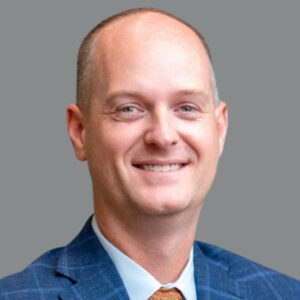 “We use artificial intelligence daily,” Matt explains, describing how it’s woven into tasks both big and small—from communication to design. “If you’ve ever been stuck trying to get some language out the right way, just throwing a few prompts into ChatGPT or something similar” can result in a “very well-worded email” and freeing up time, he says.
“We use artificial intelligence daily,” Matt explains, describing how it’s woven into tasks both big and small—from communication to design. “If you’ve ever been stuck trying to get some language out the right way, just throwing a few prompts into ChatGPT or something similar” can result in a “very well-worded email” and freeing up time, he says.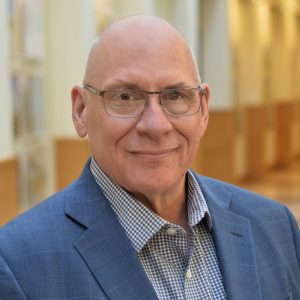 “We serve the VA across probably 75 percent of the campuses throughout the country,” Armand says. These projects span a range of services, from facility condition assessments and master planning to infrastructure upgrades like boiler and chiller plants. “We’ve also spent a great deal of time over the last few years and are still involved in electronic health record projects for the VA,” Armand adds.
“We serve the VA across probably 75 percent of the campuses throughout the country,” Armand says. These projects span a range of services, from facility condition assessments and master planning to infrastructure upgrades like boiler and chiller plants. “We’ve also spent a great deal of time over the last few years and are still involved in electronic health record projects for the VA,” Armand adds.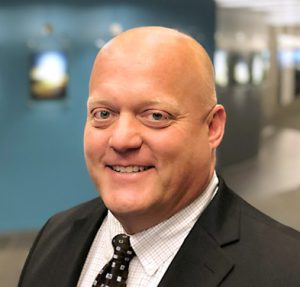 This episode of The Future Built Smarter explores the evolving landscape of healthcare design and engineering with guest Eric Vandenbroucke, Vice President of Healthcare at IMEG. “2025 started with a lot of optimism, but it’s definitely been a roller coaster,” he says.
This episode of The Future Built Smarter explores the evolving landscape of healthcare design and engineering with guest Eric Vandenbroucke, Vice President of Healthcare at IMEG. “2025 started with a lot of optimism, but it’s definitely been a roller coaster,” he says. 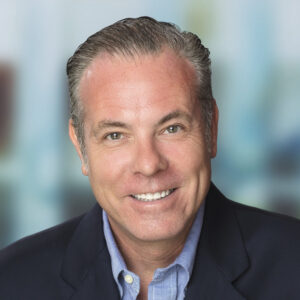 This episode of The Future Built Smarter features Robbie Jones, an IMEG project executive and mechanical engineer who led the firm’s design of the new Advanced Engineering Building at the University of Nevada, Las Vegas—ENR’s 2024 Best of the Best Project in the higher education/research category.
This episode of The Future Built Smarter features Robbie Jones, an IMEG project executive and mechanical engineer who led the firm’s design of the new Advanced Engineering Building at the University of Nevada, Las Vegas—ENR’s 2024 Best of the Best Project in the higher education/research category.  As IMEG’s Innovation Extended Reality Specialist, Abby also incorporates VR and AR technology into the firm’s engineering workflow to revolutionize the design process and bolster IMEG project team collaboration. “Whether reviewing a critical space or evaluating workflows, both the engineers and clients will be able to make confident and well-deformed decisions,” she says. Overall, she adds, immersive experiences help accelerate the decision-making process, reduce the number of costly revisions, and optimize project outcomes.
As IMEG’s Innovation Extended Reality Specialist, Abby also incorporates VR and AR technology into the firm’s engineering workflow to revolutionize the design process and bolster IMEG project team collaboration. “Whether reviewing a critical space or evaluating workflows, both the engineers and clients will be able to make confident and well-deformed decisions,” she says. Overall, she adds, immersive experiences help accelerate the decision-making process, reduce the number of costly revisions, and optimize project outcomes. Challenges currently facing industrial and manufacturing clients include speed to market (proper planning is critical to avoid delays that can cost companies millions); talent shortages (a lack of skilled professionals affects both operations and project execution); and technology integration (AI, automation, and robotics are becoming essential in addressing labor shortages and improving efficiency). “We’re seeing more companies invest in automation, not just to improve efficiency, but to fill the gaps left by labor shortages,” Mike says.
Challenges currently facing industrial and manufacturing clients include speed to market (proper planning is critical to avoid delays that can cost companies millions); talent shortages (a lack of skilled professionals affects both operations and project execution); and technology integration (AI, automation, and robotics are becoming essential in addressing labor shortages and improving efficiency). “We’re seeing more companies invest in automation, not just to improve efficiency, but to fill the gaps left by labor shortages,” Mike says.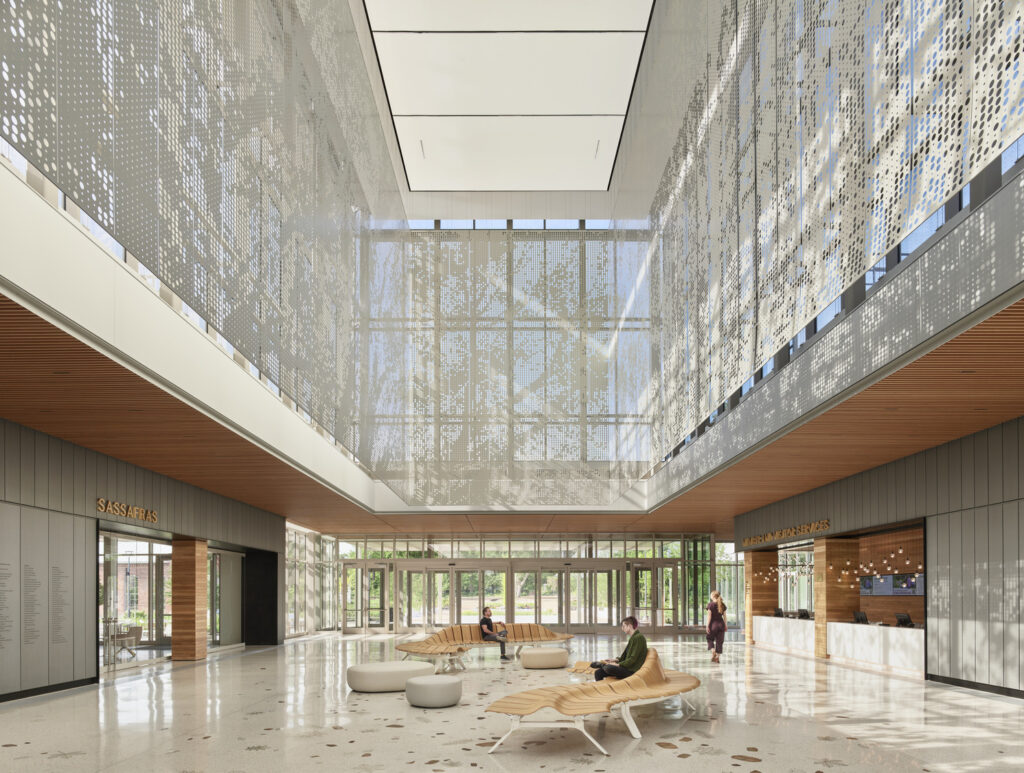 The decision to build the new center was largely driven by continual growth in the number of annual visitors; last year 1.3 million people visited the Garden, far more than the previous center could have comfortably accommodated. “The way the original visitor center was constructed, there were a lot of little bottlenecks in getting visitors through the center and into the garden,” Deniz says.
The decision to build the new center was largely driven by continual growth in the number of annual visitors; last year 1.3 million people visited the Garden, far more than the previous center could have comfortably accommodated. “The way the original visitor center was constructed, there were a lot of little bottlenecks in getting visitors through the center and into the garden,” Deniz says.  Most recently serving as an IMEG client executive in southern California, Bob is now turning his full attention to the growth and continued development of IMEG’s portfolio in the hospitality sector—a market he has led for several years and in which he has vast experience. “I absolutely am excited,” he says of his re-established focus.
Most recently serving as an IMEG client executive in southern California, Bob is now turning his full attention to the growth and continued development of IMEG’s portfolio in the hospitality sector—a market he has led for several years and in which he has vast experience. “I absolutely am excited,” he says of his re-established focus. IMEG’s transportation projects include traffic studies, bridge, roadway, and highway design, rehabilitation and inspection, non-motorized corridors, and grant applications that secure funding for infrastructure improvements. In the wake of the Infrastructure Investment and Jobs Act of 2021, Steve says there have been many infrastructure improvements made across the country but there’s much more work to be done. “Overall, my impression of roads and bridges today is that they’re improving,” he says. “We’re getting better as a nation, but we still have a long way to go.”
IMEG’s transportation projects include traffic studies, bridge, roadway, and highway design, rehabilitation and inspection, non-motorized corridors, and grant applications that secure funding for infrastructure improvements. In the wake of the Infrastructure Investment and Jobs Act of 2021, Steve says there have been many infrastructure improvements made across the country but there’s much more work to be done. “Overall, my impression of roads and bridges today is that they’re improving,” he says. “We’re getting better as a nation, but we still have a long way to go.” Alice says the industry is seeing an influx of interest and investment in technology—noteworthy at a time when McKinsey & Company reports continue to highlight stagnation in construction productivity. “The industry is frustrated that the world thinks we are not more innovative, more technology forward, or productive,” she says.
Alice says the industry is seeing an influx of interest and investment in technology—noteworthy at a time when McKinsey & Company reports continue to highlight stagnation in construction productivity. “The industry is frustrated that the world thinks we are not more innovative, more technology forward, or productive,” she says.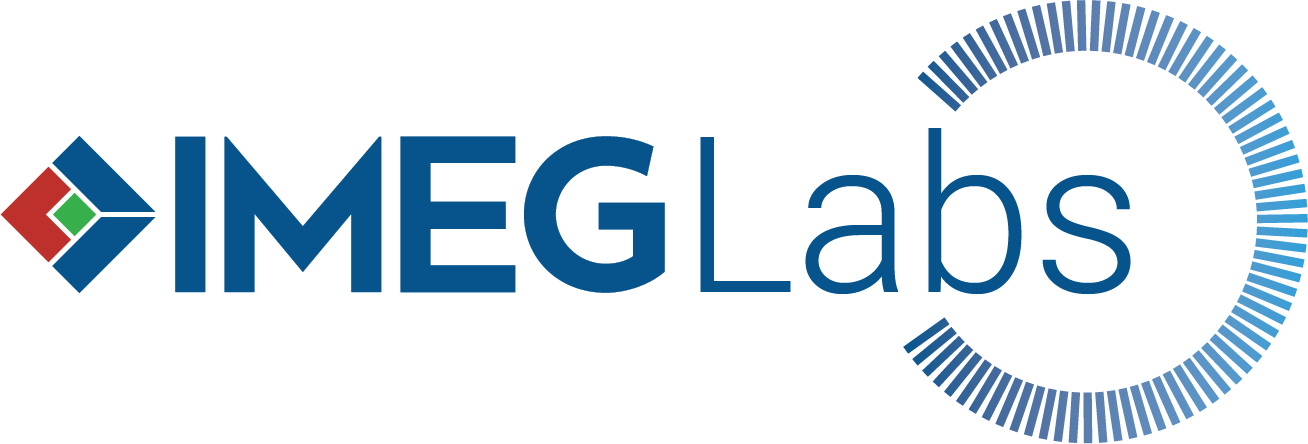 This episode of The Future Built Smarter features Matt Malcolm, leader of IMEG’s newest service, IMEG Labs. “With IMEG Labs we are able to offer our clients third-party unbiased evaluation of technology as part of the design process—ahead of actual construction events or implementation on a client’s site,” says Matt. The evaluations and demonstrations are conducted at the IMEG Labs testing site in the firm’s office in Naperville, IL. “We can take the different technologies that we’re describing as we talk about integration and smart buildings and bring them into our small-scale environment. We can leverage the agile framework and talk about how these things fit together, build out some proof of concepting, and make adjustments before we actually have people installing these things on site.” Owners and clients are encouraged to visit IMEG Labs for demonstrations of their anticipated technology solutions and integrations.
This episode of The Future Built Smarter features Matt Malcolm, leader of IMEG’s newest service, IMEG Labs. “With IMEG Labs we are able to offer our clients third-party unbiased evaluation of technology as part of the design process—ahead of actual construction events or implementation on a client’s site,” says Matt. The evaluations and demonstrations are conducted at the IMEG Labs testing site in the firm’s office in Naperville, IL. “We can take the different technologies that we’re describing as we talk about integration and smart buildings and bring them into our small-scale environment. We can leverage the agile framework and talk about how these things fit together, build out some proof of concepting, and make adjustments before we actually have people installing these things on site.” Owners and clients are encouraged to visit IMEG Labs for demonstrations of their anticipated technology solutions and integrations. This episode of The Future Built Smarter features Dr. Sam Zolfagharian, president of the AI consulting firm YegaTech, which helps AEC companies adapt to the era of disruption caused by the introduction of artificial intelligence into the industry. A keynote speaker and author of the forthcoming book, “Disrupt It,” Sam also holds a Ph.D. in design computing and construction management and has over 20 years of experience developing technologies for the industry. Of
This episode of The Future Built Smarter features Dr. Sam Zolfagharian, president of the AI consulting firm YegaTech, which helps AEC companies adapt to the era of disruption caused by the introduction of artificial intelligence into the industry. A keynote speaker and author of the forthcoming book, “Disrupt It,” Sam also holds a Ph.D. in design computing and construction management and has over 20 years of experience developing technologies for the industry. Of 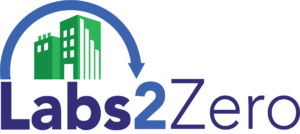 The I2SL’s Labs2Zero initiative, launched in 2022, is designed to help the industry reduce energy consumption and take steps toward decarbonization. While the initiative emphasizes retrofitting existing labs, it also is expanding its focus to include new lab facilities as well.
The I2SL’s Labs2Zero initiative, launched in 2022, is designed to help the industry reduce energy consumption and take steps toward decarbonization. While the initiative emphasizes retrofitting existing labs, it also is expanding its focus to include new lab facilities as well. IMEG’s Peter Monroe joins this episode of The Future Built Smarter to share the experiences of his recent site visit to Antarctica. A former client executive and a structural engineer for 55 years, Peter made the journey from Denver to Antarctica in early 2024 to visit a project at McMurdo Station, a National Science Foundation research facility on Ross Island. McMurdo is undergoing extensive updates, and Peter’s visit was to observe the structural construction of the station’s new dormitory, one of two buildings for which IMEG has provided structural construction documents.
IMEG’s Peter Monroe joins this episode of The Future Built Smarter to share the experiences of his recent site visit to Antarctica. A former client executive and a structural engineer for 55 years, Peter made the journey from Denver to Antarctica in early 2024 to visit a project at McMurdo Station, a National Science Foundation research facility on Ross Island. McMurdo is undergoing extensive updates, and Peter’s visit was to observe the structural construction of the station’s new dormitory, one of two buildings for which IMEG has provided structural construction documents.  IMEG President and CEO Paul VanDuyne talks about the trajectory of his career and the firm’s growth during his 20-year tenure as CEO in this special episode of The Future Built Smarter. The recipient of
IMEG President and CEO Paul VanDuyne talks about the trajectory of his career and the firm’s growth during his 20-year tenure as CEO in this special episode of The Future Built Smarter. The recipient of 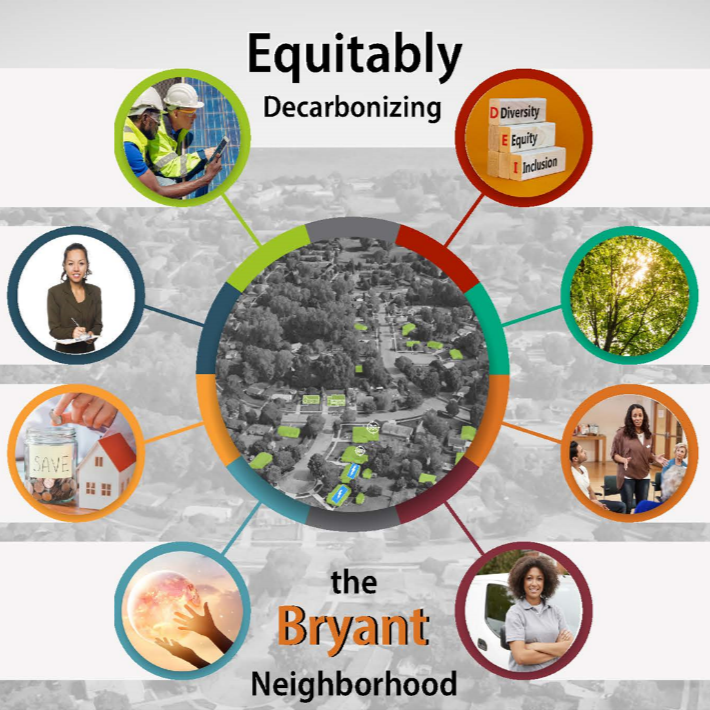 “In Ann Arbor we have the goal of achieving a just transition to communitywide carbon neutrality by 2030,” said Stults. “One of the things that is really critical is centering equity in our work, and so from the very beginning we said we have to make sure that we’re working with neighborhoods that we’ve traditionally disinvested in.” The city’s Bryant Neighborhood—an underserved, energy-burdened community of 262 households, 75 percent of which are considered low-income, with over 50 percent of residents being minorities and renters—was chosen for the project. “For almost three years we’ve been working with Community Action Network (CAN) and the residents of Bryant to figure out what would it mean if they became the most sustainable neighborhood in America,” said Stults. “What would it mean if you flipped the script on a neighborhood that we sort of just forgot about and made it be the centerpiece of climate action? And then this project came about.”
“In Ann Arbor we have the goal of achieving a just transition to communitywide carbon neutrality by 2030,” said Stults. “One of the things that is really critical is centering equity in our work, and so from the very beginning we said we have to make sure that we’re working with neighborhoods that we’ve traditionally disinvested in.” The city’s Bryant Neighborhood—an underserved, energy-burdened community of 262 households, 75 percent of which are considered low-income, with over 50 percent of residents being minorities and renters—was chosen for the project. “For almost three years we’ve been working with Community Action Network (CAN) and the residents of Bryant to figure out what would it mean if they became the most sustainable neighborhood in America,” said Stults. “What would it mean if you flipped the script on a neighborhood that we sort of just forgot about and made it be the centerpiece of climate action? And then this project came about.” Discussing the new center and proton therapy aspects of the project are Jerry McGuire and Steve Mumm, senior project managers for University of Wisconsin Hospitals and Clinics Planning Design and Construction, and Kevin Langan, an IMEG mechanical engineer working on the project. “Proton therapy is a relatively new cancer treatment,” says McGuire. “It’s an advanced form of radiation therapy using a precise dose of radiation that conforms to the tumor itself—reducing side effects and causing no damage to surrounding healthy tissues.” The new center will offer both a rotating gantry where a patient lies down on a couch with the machine rotating around them, and an upright fixed beam system in which the patient sits up. The upright system is being found to provide improved outcomes— offering greater comfort, reducing patient anxiety, and improved accuracy—and is particularly beneficial for pediatric patients.
Discussing the new center and proton therapy aspects of the project are Jerry McGuire and Steve Mumm, senior project managers for University of Wisconsin Hospitals and Clinics Planning Design and Construction, and Kevin Langan, an IMEG mechanical engineer working on the project. “Proton therapy is a relatively new cancer treatment,” says McGuire. “It’s an advanced form of radiation therapy using a precise dose of radiation that conforms to the tumor itself—reducing side effects and causing no damage to surrounding healthy tissues.” The new center will offer both a rotating gantry where a patient lies down on a couch with the machine rotating around them, and an upright fixed beam system in which the patient sits up. The upright system is being found to provide improved outcomes— offering greater comfort, reducing patient anxiety, and improved accuracy—and is particularly beneficial for pediatric patients. Scott Campagna, Senior Director of Housing at IMEG, is featured in this episode—one in a series of conversations with the firm’s market leaders. Scott talks about the subsectors of IMEG’s housing work—neighborhoods, multifamily, student housing, and senior living—and the challenges and opportunities facing the market overall. “It’s an interesting time,” he says. “There’s a huge housing demand in all sectors but in the current environment, with the lending being pulled back, projects in all sectors generally are moving a bit slower.” Scott also discusses
Scott Campagna, Senior Director of Housing at IMEG, is featured in this episode—one in a series of conversations with the firm’s market leaders. Scott talks about the subsectors of IMEG’s housing work—neighborhoods, multifamily, student housing, and senior living—and the challenges and opportunities facing the market overall. “It’s an interesting time,” he says. “There’s a huge housing demand in all sectors but in the current environment, with the lending being pulled back, projects in all sectors generally are moving a bit slower.” Scott also discusses 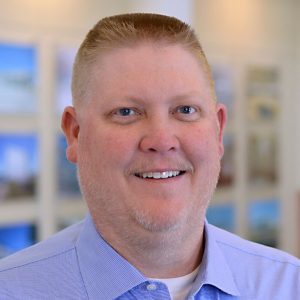 In a continuing series of discussions with IMEG’s market leaders, this episode of The Future Built Smarter features John Holbert, vice president of education. John discusses the challenges facing the market, primarily those for higher education institutions, which face ever-increasing enrollment competition, changes in student demographics, limited resources, aging infrastructure, and difficulties with facility staff retention. Many higher education institutions, as well as K-12 school districts, also face challenges in meeting sustainability and environmental initiatives as well as the need to improve safety and security in their buildings and on their campuses. “Security has become a big topic, and we have started consulting on safety and security plans for campuses and districts,” he says. Such initiatives start with a vulnerability assessment and gap analysis, with planning and design including principles from Crime Prevention through Environmental Design, or CPTED. “We’re also seeing more referendums and funding opportunities for safety and security measures,” he adds. Before embarking on any building project, John emphasizes the importance of master planning to best prepare for the needs of the future. Such planning helps institutions meet their long-term goals and allocate funds and other resources accordingly—before it’s too late. “Across the landscape of education, we see a lot of deferred maintenance,” he says. “We’re still going into 50-plus-year-old buildings that have original systems in them.”
In a continuing series of discussions with IMEG’s market leaders, this episode of The Future Built Smarter features John Holbert, vice president of education. John discusses the challenges facing the market, primarily those for higher education institutions, which face ever-increasing enrollment competition, changes in student demographics, limited resources, aging infrastructure, and difficulties with facility staff retention. Many higher education institutions, as well as K-12 school districts, also face challenges in meeting sustainability and environmental initiatives as well as the need to improve safety and security in their buildings and on their campuses. “Security has become a big topic, and we have started consulting on safety and security plans for campuses and districts,” he says. Such initiatives start with a vulnerability assessment and gap analysis, with planning and design including principles from Crime Prevention through Environmental Design, or CPTED. “We’re also seeing more referendums and funding opportunities for safety and security measures,” he adds. Before embarking on any building project, John emphasizes the importance of master planning to best prepare for the needs of the future. Such planning helps institutions meet their long-term goals and allocate funds and other resources accordingly—before it’s too late. “Across the landscape of education, we see a lot of deferred maintenance,” he says. “We’re still going into 50-plus-year-old buildings that have original systems in them.” 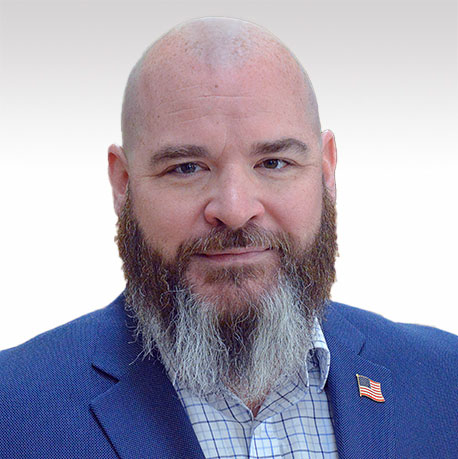 Holistic security considerations for K-12 school design are examined in this 17-minute episode featuring Ryan Searles, IMEG’s security consulting group leader. Ryan spends an average of three weeks of each month traveling the country presenting at conferences or training organizations in crisis management, active shooter mitigation, and other security preparedness—with a growing number of school districts seeking his team’s services. “We keep seeing a rise in violence in the United States and more violent events occurring at places of education,” he says. “In K-12, particularly, it’s really about what we can do to mitigate it from happening.” In addition to getting involved earlier in the design phase of new facilities, Ryan and his team are also conducting an increasing number of security assessments of existing schools, providing answers to such questions as, “What do we have in place? What are we doing right? Where are our gaps and where are our vulnerabilities? How do we fix those?” The most effective security design and emergency preparedness takes a blended, holistic approach, Ryan says, and includes not only physical and technology design aspects but also “the human aspect”—training, drills and rehearsals for staff and students, as well as proactive threat assessments of individuals and being vigilant about watching for early warning signs. “We’ve been a very reactive culture in the United States with school security and safety. We can’t do that anymore—that’s become very apparent and has a lot to do with my team being so busy. Schools are reaching out saying, ‘Come show us what we need to do to keep these kids safe.’ “
Holistic security considerations for K-12 school design are examined in this 17-minute episode featuring Ryan Searles, IMEG’s security consulting group leader. Ryan spends an average of three weeks of each month traveling the country presenting at conferences or training organizations in crisis management, active shooter mitigation, and other security preparedness—with a growing number of school districts seeking his team’s services. “We keep seeing a rise in violence in the United States and more violent events occurring at places of education,” he says. “In K-12, particularly, it’s really about what we can do to mitigate it from happening.” In addition to getting involved earlier in the design phase of new facilities, Ryan and his team are also conducting an increasing number of security assessments of existing schools, providing answers to such questions as, “What do we have in place? What are we doing right? Where are our gaps and where are our vulnerabilities? How do we fix those?” The most effective security design and emergency preparedness takes a blended, holistic approach, Ryan says, and includes not only physical and technology design aspects but also “the human aspect”—training, drills and rehearsals for staff and students, as well as proactive threat assessments of individuals and being vigilant about watching for early warning signs. “We’ve been a very reactive culture in the United States with school security and safety. We can’t do that anymore—that’s become very apparent and has a lot to do with my team being so busy. Schools are reaching out saying, ‘Come show us what we need to do to keep these kids safe.’ “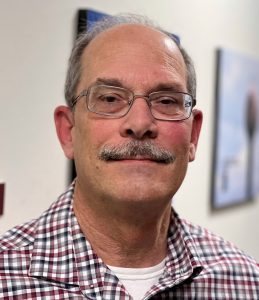 This episode features Jack Kusek, an IMEG civil engineer with expertise in water and wastewater projects. Listen to the episode and you’ll learn:
This episode features Jack Kusek, an IMEG civil engineer with expertise in water and wastewater projects. Listen to the episode and you’ll learn:  In the second of a series of conversations with IMEG market leaders and directors, Brandon Fortier, Director of Science & Technology, joins podcast host Joe Payne and series co-host Steve Rhoades, Vice President of Market Development and Federal Solutions. This episode, like the others in the series, provides a high-level view of the trends, challenges, opportunities, and topics that are top-of-mind for IMEG’s clients and partners.
In the second of a series of conversations with IMEG market leaders and directors, Brandon Fortier, Director of Science & Technology, joins podcast host Joe Payne and series co-host Steve Rhoades, Vice President of Market Development and Federal Solutions. This episode, like the others in the series, provides a high-level view of the trends, challenges, opportunities, and topics that are top-of-mind for IMEG’s clients and partners. What is a microgrid? What are its benefits? Does it offer a good return on investment? Answers to these questions and more are discussed in this episode featuring Mike Zorich, IMEG Chief Operations Officer, and Eric Vandenbroucke, IMEG Vice President of Healthcare. “A microgrid is a collection of power sources in addition to your normal utility source,” explains Eric. “It could include things like a generator, solar power, wind turbines, battery backup. It’s a collection that is able to be decoupled from the grid if you have a power surge or problems with the grid (occurring more frequently due to weather-related events), allowing you to continue operating your facility.” Microgrids are especially beneficial for healthcare facilities and buildings in other markets that require 24/7 uninterrupted operation. They go beyond code-required emergency power, can operate for an unlimited amount of time, and provide carbon-free energy. “Another consideration with microgrids is decarbonization in healthcare,” says Mike Zorich. “We’ve seen a big push from the Biden administration with the goals of 50 percent carbon reduction in healthcare by 2030 and then zero emissions by 2030. A microgrid is not the only path to decarbonization, but it needs to be part of that discussion.” Despite a microgrid’s potential, Eric adds that many are not familiar with the strategy. “There have been some recent surveys stating that over half of healthcare facility managers aren’t even familiar with what a microgrid is and about another third of them admit they’re only somewhat familiar. So, I think education is going to be the first step in figuring out if this is something that might fit with your organization.” Listen to the podcast to learn more, and download IMEG’s free executive guide,
What is a microgrid? What are its benefits? Does it offer a good return on investment? Answers to these questions and more are discussed in this episode featuring Mike Zorich, IMEG Chief Operations Officer, and Eric Vandenbroucke, IMEG Vice President of Healthcare. “A microgrid is a collection of power sources in addition to your normal utility source,” explains Eric. “It could include things like a generator, solar power, wind turbines, battery backup. It’s a collection that is able to be decoupled from the grid if you have a power surge or problems with the grid (occurring more frequently due to weather-related events), allowing you to continue operating your facility.” Microgrids are especially beneficial for healthcare facilities and buildings in other markets that require 24/7 uninterrupted operation. They go beyond code-required emergency power, can operate for an unlimited amount of time, and provide carbon-free energy. “Another consideration with microgrids is decarbonization in healthcare,” says Mike Zorich. “We’ve seen a big push from the Biden administration with the goals of 50 percent carbon reduction in healthcare by 2030 and then zero emissions by 2030. A microgrid is not the only path to decarbonization, but it needs to be part of that discussion.” Despite a microgrid’s potential, Eric adds that many are not familiar with the strategy. “There have been some recent surveys stating that over half of healthcare facility managers aren’t even familiar with what a microgrid is and about another third of them admit they’re only somewhat familiar. So, I think education is going to be the first step in figuring out if this is something that might fit with your organization.” Listen to the podcast to learn more, and download IMEG’s free executive guide,  In this episode we visit with IMEG’s Cliff Schwinger, a senior structural engineer in Philadelphia and recipient of the Lifetime Achievement Award from the American Institute of Steel Construction. Cliff has more than 40 years of experience, is a nationally recognized quality assurance expert, and presents at seminars nationwide, including the NASCC Steel Conference, where he has been a speaker for 10 years.
In this episode we visit with IMEG’s Cliff Schwinger, a senior structural engineer in Philadelphia and recipient of the Lifetime Achievement Award from the American Institute of Steel Construction. Cliff has more than 40 years of experience, is a nationally recognized quality assurance expert, and presents at seminars nationwide, including the NASCC Steel Conference, where he has been a speaker for 10 years. In this episode of The Future Built Smarter, Jeff Ryan, Managing Principal for Design at Christner Architects, joins us for a discussion on the Ball Helix Central Research & Development Center, winner of a 2022 Design Excellence Merit Award for Innovation from Lab Manager magazine. Christner was the architect, lab planner, and interior designer for the project, and IMEG provided structural, MEP, fire protection, and civil design, in addition to commissioning services.
In this episode of The Future Built Smarter, Jeff Ryan, Managing Principal for Design at Christner Architects, joins us for a discussion on the Ball Helix Central Research & Development Center, winner of a 2022 Design Excellence Merit Award for Innovation from Lab Manager magazine. Christner was the architect, lab planner, and interior designer for the project, and IMEG provided structural, MEP, fire protection, and civil design, in addition to commissioning services. 